#West Brom FC
Explore tagged Tumblr posts
Text
Portsmouth Continues Lengthy Negotiations Amidst Championship Interest
Portsmouth Continues Lengthy Negotiations Amidst Championship Interest @conorperrettx #Pompey | #LeagueOne
Portsmouth’s Chief executive Andy Cullen, says the club remain in contract talks with midfielder Jay Mingi and remains hopeful they can get a deal done despite his contract being set to expire at the end of the season. The 22-year-old has been in negotiations to extend his stay at Fratton Park for four months now, however, talks have gone on after links to a host Championship clubs. West Brom,…

View On WordPress
#birmingham#Birmingham City#Championship#Danny Cowley#EFL#Huddersfield#Huddersfield town#league one#Pompey#Portsmouth#Portsmouth FC#transfer#transfer News#west brom#West Bromwich#West Bromwich Albion
0 notes
Text
U18s report: West Brom 1-4 Arsenal
Omari Benjamin scores a hat-trick in an emphatic win
0 notes
Text
Match Review: Manchester United 1-1 FC Twente
No. Go away. I had far more fun photographing West Brom's women smashing Stourbridge. Can we talk about that? No? Oh, okay then.

United might be looking better this season than last, but that's a) not hard and b) not enough.
Christian Eriksen scored a lovely finish from the left side of the Twente box in the 35th minute in another half of Manchester United looking promising but not scoring enough to finish a game off.

The second half saw the momentum flip the other way, but Sam Lammers' goal in the 68th minute was a calamity affair, with the Twente player driving through the United team like a hot knife through butter. Mr Blood and Thunder, Manuel Ugarte, won the ball back with vigour, only for goalscorer Eriksen to dither and lose the ball again - and then Andre Onana had his European Competition Panic Disorder again and ran away from the near post and just let the finish go on. Wtf?

United's possession was fine, and the pass accuracy was fine, but United had 19 shots and only 5 on target. There is the issue, and the feeling brewing at the moment amongst fans is that Bruno Fernandes needs dropping for his poor form. This would pose a minor conundrum for Erik Ten Hag, but Joshua Zirkzee in his 9/10 hybrid role could be the perfect creative foil for Rasmus Hojlund as the lead striker. It would be interesting if United clicked without Bruno, after all the Portuguese talisman has done for the Red Devils in what has been a chaotic era. Maybe he thrives on the chaos. Maybe he needs a shitshow so he can shine? Who knows.
youtube
#manchester united#man u#man united#man utd#manchester reds#erik ten hag#marcus rashford#old trafford#fc twente#bruno fernandes#christian eriksen#sam lammers#andre onana#manuel ugarte#harry maguire#Youtube
3 notes
·
View notes
Text
West Brom: Carlos Corberan leaves The Hawthorns to take over at Valencia | football news
Carlos Corberan has left his job at West Brom to take over as the new coach of Valencia. The LaLiga club has confirmed the news having fulfilled the termination clause of Corberan’s contract. “Carlos Corberan becomes the new coach of Valencia CF until 2027,” Valencia said in a statement on Tuesday. “The club has informed West Bromwich Albion FC of the exercise of the exit option stipulated in his…
0 notes
Text
West Brom: Carlos Corberan leaves Hawthorns to join Valencia | Football News
Carlos Corberan has left his job at West Brom to take over as Valencia's new head coach. The LaLiga club have confirmed the news that they have fulfilled the release clause in Corberan's contract. “Carlos Corberan becomes the new coach of Valencia CF until 2027,” Valencia said in a statement on Tuesday. “The club has informed West Bromwich Albion FC of the exercise of the exit option set out in…
0 notes
Text
West Brom: Carlos Corberan leaves Hawthorns to join Valencia | Football News
Carlos Corberan has left his job at West Brom to take over as Valencia's new head coach. The LaLiga club have confirmed the news that they have fulfilled the release clause in Corberan's contract. “Carlos Corberan becomes the new coach of Valencia CF until 2027,” Valencia said in a statement on Tuesday. “The club has informed West Bromwich Albion FC of the exercise of the exit option set out in…
0 notes
Text
Uefa Nations League: Paddy McNair and Shayne Lavery returns to Northern Ireland squad
Paddy McNair and Shayne Lavery are among the players restored to the Northern Ireland squad for next month’s Uefa Nations League double-header. Defender McNair, who joined West Brom on loan this summer from San Diego FC, is back after missing the summer friendlies against Spain and Andorra. Striker Lavery also returns on the back of signing for Cambridge United this summer. Also returning are…
0 notes
Text
การเดิมพันที่ของทีมฟุตบอล West Brom FC มีโอกาสชนะเท่าไร?
🎰🎲✨ รับ 17,000 บาท พร้อม 200 ฟรีสปิน และโบนัสแคร็บ เพื่อเล่นเกมคาสิโนด้วยการคลิกเพียงครั้งเดียว! ✨🎲🎰
การเดิมพันที่ของทีมฟุตบอล West Brom FC มีโอกาสชนะเท่าไร?
ประกวดในลีกเอ็นก์ประเทศอังกฤษนับถือว่าเป็นภารกิจที่ท้าทายอันใหญ่สำหรับทีม West Brom FC ทีมนี้มีประวัติศาสตร์ที่โดดเด่นในฐานะทีมที่มีประสบการณ์ในการแข่งขันในลีกดัง ๆ ในอดีต โดยเฉพาะในระดับ Premier League แม้ว่าสภาพการเล่นของพวกเขาบางครั้งอาจไม่แสดงให้เห็นถึงความแข็งแกร่งของทีมที่แท้จริง แต่โอกาสในการพัฒนาและเติบโตในลีก EFL นั้นก็ยังคงมีอยู่อย่างมากมายสำหรับ West Brom FC
การสุ่มบอลของทีม West Brom FC ทั้งในระดับลีกอังกฤษและยุโรปแสดงให้เห็นว่าพวกเขามีศักยภาพที่ดีในการแข่งขัน ความสามารถของนักเตะและการสร้างทีมที่แข็งแกร่งเป็นจุดเด่นของทีมนี้ ถึงอย่างไรก็ตาม การที่จะดำเนินการแข่งขันในลีก EFL นั้นมีความยากลำบากมากมายเช่นกัน และต้องมีความพร้อมที่จะรับมือกับความท้าทายที่เพิ���มขึ้นในทุกๆ เกม
เพื่อที่จะทำให้สามารถเอาชนะได้ในลีก EFL ทีม West Brom FC จำเป็นต้องมีการวางแผนและฝึกซ้อมอย่างดีและเต็มที่ รวมถึงการรักษาสมดุลระหว่างการโจมตีและการป้องกัน ทั้งนี้ทำให้ทีมมีโอกาสชนะมากขึ้นในทุกๆ เกมในลีก EFL และยังช่วยให้ West Brom FC สามารถก้าวขึ้นมาอยู่ในสังกัดลีก Premier League อีกครั้งได้อีกด้วย
สํารวจการเล่นของ West Brom FC ในฤดูกาลล่าสุด ต่างพบกับความท้าทายที่มากมาย ทีมนี้เข้าร่วมการแข่งขันในลีกอันยอดเยี่ยมอย่าง英เจล์ ที่ต้องเจอการแข่งขันอย่างเป็นทางการในทุกๆ สุดสัปดาห์ ซึ่งทําให้ต้องมีความพร้อมทางกายสุขุม ทายที่จะเสียค่าเพิ่มในเดือนพฤศจิกายนที่ดรอปพอยต์วี 2 จากบุคคลสำคัญอีกแล้วที่เตือนภัย โดยเจอลุคสแคงโฮม Teed (3) ข้าวของความชอบสำหรับการจัดระเบิดโรงเรียนของฉันเรียนรู้ส่วนประกอบไสวและรู้สำหรับการสัปกี้เป็นคู่ของเรา
แม้ว่า West Brom FC อาจไม่ได้รับผลกระทบที่ดี แต่พวกเขาก็ยังคงพลิกศัพท์อย่างสะดวกในกลางเกม นักฟุตบอลทีมนี้มักจะมีการแพรวพลายลขนาดใหญ่จากกลางสนาม เมื่อพวกเขามีโอกาสในการโจมตี ตลอดทั้งฤดูกาลที่ผ่านมา สถิติการยิงประตูของ West Brom FC อาจจะไม่สูงมาก แต่พวกเขาก็ยังคงเป็นคู่แข่งที่น่าเกรงขาม ทีมนี้ทันสมัยในเส้นทางโจมตี หวังว่าในอนาคตจะมีการปรับปรุงและปรับปรุงยิงลงในความกล้าแห่งทีม
ปรากฏว่า West Brom FC ต้องเผชิญกับการบริดารครั้งมากพอที่เหลือแค่ไม้ดอกเหต. ถึงแม้จะมีการตีพิมพำเรื่องคลายเซ็นแทรง แต่ก็ยังมีการณ์ประวีตแทนไม้ผายเขนกรัอว. ถีอว่าจะมีการชีวแตช่าเกือกแล้ดและกึงดจดหู่ี่หยดัดใยชตายด้บา.
ศัพท์ที่เกี่ยวข้องกับการเดิมพันบอลเป็นสิ่งสำคัญที่ผู้เล่นควรทราบเพื่อเพิ่มความเข้าใจในการแทงบอลและลดความสับสนในกระบวนการเล่นเกม หนึ่งในศัพท์ที่สำคัญคือ "บริการหลัก" ซึ่งหมายถึงเปอร์เซนต์ที่เจ้าตลาดคาดว่าจะชนะในการแข่งขัน ผู้เล่นต้องเข้าใจถึงการอ่านบริการหลักเพื่อทำการเดิมพันเชื่อถือได้ สำหรับศัพท์ "ออเดอร์" แสดงถึงการเดิมพันที่ถูกปิดไว้ก่อนการแข่งขัน เพื่อระบุราคาและจำนวนเงินที่ต้องการเดิมพัน
ศัพท์อื่นๆ รวมถึง "เทอร์ม", "อะคูมูล์เทียม", และ "เดิมพันสด" เป็นตัวอย่างที่สำคัญที่ผู้เล่นควรทราบ เทอร์มหมายถึงการเ��ลี่ยนแปลงราคาของบริการหลัก ในขณะที่อะคูมูล์เทียมคือการเดิมพันโดยไม��มีค่านึงต่อผลการแข่งขัน เดิมพันสดเป็นการแทงทันทีในเวลาที่เกมกำลังเป็นการแข่งขัน
การรู้ถึงศัพท์ที่เกี่ยวข้องกับการเดิมพันบอลจะช่วยให้ผู้เล่นมีความเข้าใจในกระบวนการเดิมพันได้อย่างแม่นยำ และลดความสับสนในการเล่นเกมนี้เพิ่มขึ้น.
West Bromwich Albion FC เป็นสโมสรฟุตบอลที่มีประวัติศาสตร์ยาวนานในลีกอังกฤษ สโมสรนี้เกิดขึ้นในปี 1878 และมีชื่อเสียงเป็นอย่างมากในวงการฟุตบอลโลก เป็นทีมที่มีความสำเร็จในการปกครองโลกในอดีต โดยเฉพาะการชนะแชมป์ลีกอังกฤษได้สองครั้งในอดีต โดยตัวสโมสรในปัจจุบันยังคงเป็นกำลังใจให้แฟนบอลทั่วโลกอยู่ตลอดเวลา
ความน่าเชื่อถือของ West Brom FC มาจากประวัติศาสตร์ที่ยาวนานและความมุ่งมั่นในการพัฒนาตัวเองอยู่ตลอดเวลา ทีมมีชื่อเสียงในการสร้างนักเตะมืออาชีพที่มีคุณภาพและทักษะดีที่มาช่วยเสริมกำลังทีม นอกจากนี้ West Brom FC ยังได้รับการสนับสนุนจากแฟนบอลอย่างแข็งแรงทั่วโลก ทำให้ทีมมีความเข้มแข็งและมั่นคงในการแข่งขันทุกระดับ
นอกจากนี้ West Brom FC ยังมีโค้ชและทีมงานที่มีประสบการณ์และความชำนาญในการจัดการทีมอย่างมืออาชีพ จึงทำให้ทีมมีความเชื่อถือและมีแผนการเล่นที่ดีในแต่ละการแข่งขัน ถึงแม้อาจจะเผชิญกับความท้าทายบางอย่าง แต่ West Brom FC เชื่อว่าจะสามารถดำเนินการต่อไปอย่างมีประสิทธิภาพและความสำเร็จในอนาคต
ในสรุป West Brom FC เป็นสโมสรฟุตบอลที่มีความน่าเชื่อถือสูง ด้วยประวัติศาสตร์ที่ยาวนาน เชื่อมั่นในทีมงานและนักเตะที่มีคุณภาพ นอกจากนี้ยังมีการสนับสนุนจากแฟนบอลอย่างแข็งแรง ทำให้ทีมมีความเข้มแข็งและต่อสู้อย่างมั่นคงในสนามแข้
ในวงการการพนันบอลออนไลน์, การวิเคราะห์เป็นก้าวสำคัญที่ช่วยให้นักพนันสามารถตัดสินใจที่แม่นยำเมื่อลงเงินเดิมพันที่มีการเสี่ยงอย่างยิ่ง การวิเคราะห์บอลมาพร้อมกับการศึกษาข้อมูลเชิงลึกเกี่ยวกับทีม ภาพรวมของการแข่งขัน ฟอร์มที่แข่งขัน และสถิติส่วนตัวของนักกีฬา
เป้าหมายหลักของการวิเคราะห์คือการสร้างความเข้าใจที่เชื่อถือได้เกี่ยวกับเกมที่จะเกิดขึ้น นักพนันสามารถใช้ข้อมูลที่เรียบง่ายเช่นผลการแข่งขันที่ผ่านมาและผลการแข่งขันโดยตรงระหว่างทีมที่จะแข่งขัน และความช่วยเหลือจากหลายทิปส์การพนัน
ทิปส์การพนัน โดยทั่วไป, จะให้ความรู้และคำแนะนำเกี่ยวกับการเดิมพัน หลายทิปส์การพนันสามารถช่วยให้นักพนันทราบเกี่ยวกับทีมที่มีโอกาสชนะมากที่สุด, อัตราการจ่าย, การขึ้นราคาหรือลดราคา และทรรบัตการพบกัน
ด้วยการวิเคราะห์และการนำทิปส์การพนันมาใช้, นักพนันสามารถเพิ่มโอกาสในการชนะและลดความเสี่ยงในการลงเงินเดิมพัน ความรู้และความเข้าใจที่ดีในโลกของการพนันบอลออนไลน์จึงเป็นสิ่งจำเป็นที่ควรมีเพื่อป้องกันความเสี่ยงและเพิ่มโอกาสในการสำเร็จในการเดิมพันใน��อล.
0 notes
Text
Meet your Sports Legends
Do you fondly remember the glory days of sports when heroes like Ray Houghton, Michael Jordan, or Sonia O’Sullivan graced the fields and arenas with their unmatched talents? If you're in your forties and seeking an extraordinary experience that will take you back to the golden eras of sports, look no further! 40xEvents Dublin are thrilled to present an exclusive opportunity for you to attend talks with historical sports figures who've left a permanent mark on the world of sports.
These legends not only made history but were history themselves. Our company’s hand-selected events bring them back to life as they share their incredible stories, insights, and memories. You'll have the unique chance to sit down with these icons and relive the moments that defined a generation. Imagine having a one-on-one conversation with a sports legend. Listening to them recount their most thrilling moments, their fiercest rivals, and their personal journeys. Whether it's hearing Houghton’s recap of sticking the ball in the English net, Michael Jordan’s time with the Bulls, or Sonia’s journey to Gold in 1995, these talks will transport you back to the heart of the action. You'll gain an unparalleled understanding of the sports you adore and the heroes who made it legendary.
Our selection of events are meticulously designed to immerse you in the world of these historical sports figures. From the moment you step in, you'll be greeted by a mesmerising atmosphere that transports you to a different era. Be ready to be swept off your feet as you enjoy captivating storytelling, exclusive memorabilia displays, and the opportunity to meet like-minded sports enthusiasts.
An Evening With Liverpool Legends The Stores Bar, Naas 13/12/2023
Come on down to The Stores Bar in Naas to enjoy and evening with Liverpool FC legends Bruce Grobbelaar and Sammi Lee. Hear about Bruce’s spaghetti legged tactics and Sammi’s incredible career as both a player and assistant manager. This is an event not to be missed by any football fan of the 80s, including but not limited to Liverpool fans!! For just €20 you can grab a pic with the legends themselves, socialise with other footy-maniacs and have a laugh listening to the great careers of these Liverpool Legends.
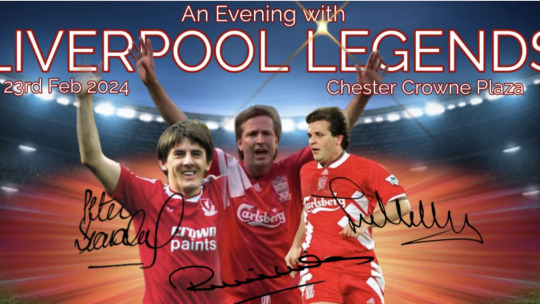
A Night With John Hartson Peadar Browns, Dublin 17/11/2023
John Hartson comes to town this November to chat with fans of the nineties and noughties. Join in on the Q&A session with this Luton, Arsenal, West Ham, Wimbledon, Coventry, West Brom, Norwich and Celtic legend at Peadar Browns pub. The Welsh icon of Celtic Football club is excited to meet and greet fans to discuss his journey from grass root football, through to Champions League football, and all the way to punditry! Tickets start at €23 and are selling fast for this one!
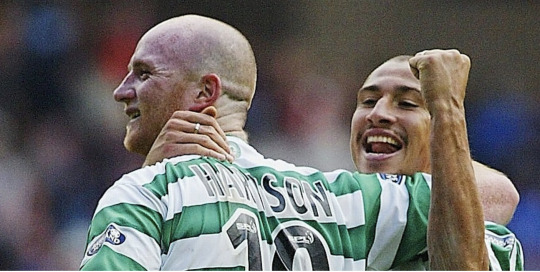
An Exclusive Evening with World Cup-Winning Rugby Legend, Jason Leonard OBE Woodbourne House, Isle of Man 09/11/2023
Join us for a midweek trip to the Isle of Man, to experience the culture of this tiny island which finds itself sandwiched between Ireland and Great Britain. Come greet English Rugby Legend, Jason Leonard, and hear of his lengthy, 14 year long rugby union career which found him making 114 caps for his country and even winning a Rugby World Cup!!! We have organised transport and tickets for a day trip from Dublin to the Isle of Man for this spectacular event. Tickets cost €100.
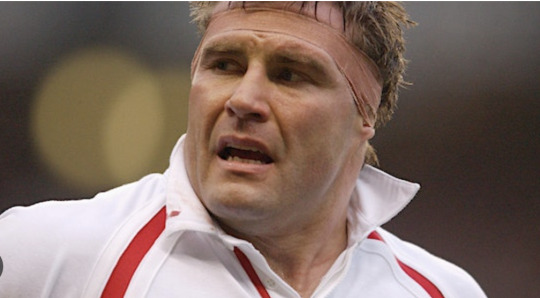
Follow us to find out about more events!
0 notes
Text
All about Super Eagles List
Nigeria will not compete in the 2022 FIFA World Cup following three consecutive participation in 2010, 2014, and 2018, as they were eliminated in the last qualifying round by Ghana's Black Stars.
Before FIFA's November deadline, 14 countries that qualified for the 2022 World Cup in Qatar have begun unveiling their team lineups.
Which of Nigeria's army of exceptional athletes would have made the team's 26-man super eagles list if the three-time African champion Super Eagles had purchased a plane ticket to Qatar in 2022? Soccernet.ng's Imhons Erons makes the selections.
Former Nigeria striker Jonathan Akpoborie has commended interim Super Eagles coach Austine Eguavoen for selecting the team that will face the Black Stars of Ghana in the 2022 World Cup playoff.
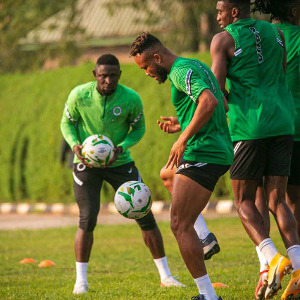
The goalkeepers are Francis Uzoho (Omonia Nicosia), Maduka Okoye (Watford), and Adebayo Adeleye (Hapoel Jerusalem)
Okoye and Uzoho didn't get much playing time for their clubs in England and Cyprus, respectively, due to a lack of Nigerian goalkeeper alternatives in Europe, but they would still have made the super eagles list.
Adeleye, on the other hand, has made a mark in Israel and deserves his most recent call-ups.
Chidozie Awaziem, Leon Balogun, and Semi Ajayi of West Brom, Kevin Akpoguma of Hoffenheim, William Troost-Ekong of Watford, Kenneth Omeruo of Leganes, Tyronne Ebuehi of Empoli, and Kenneth Omeruo of Leganes are among the defenders (Hajduk Split)
Injuries have sidelined some of Nigeria's top full-backs, including Jamilu Collins, Ola Aina, and Zaidu Sanusi.
Calvin Bassey and Chidozie Awaziem, in addition to Ebuehi and Akpoguma at right-back, would be solid left-back options.
In compared to Olisa Ndah of South Africa and Valentine Ozornwafor of Sochaux, the skills of Balogun, Omeruo, Troost-Ekong, and Ajayi tip the scales in their favour.
Midfielders: Joe Aribo (Southampton), Ahmed Musa (Sivasspor), Wilfred Ndidi (Leicester City), Oghenekaro Etebo (Aris FC), Frank Onyeka (Brentford), Raphael Onyedika (Club Brugge), Samuel Chukwueze (Villarreal), Ademola Lookman (Leicester City) (Nottingham Forest).
Nigerian flying forwards Chukwueze and Dennis are two of the best on the right wing on their best days. On the other wing, Moses Simon and Ademola Lookman may torment the opposing fullbacks for the whole of the game.
Victor Osimhen of Napoli, Paul Onuachu of KRC Genk, Terem Moffi of Lorient, and Taiwo Awoniyi of FC Barcelona are all forwards (Nottingham Forest)
It's uncertain how much damage Victor Osimhen would have caused opponents if he had been Nigeria's first-choice attacker at the Qatar World Cup in 2022.
The four wingers can alter positions in-game, providing the manager a range of tactical options. Consider visiting our website to learn more about super eagles list
0 notes
Text
Wonderful Time Of The Year In MMOexp FIFA Ultimate Team
Similarly, a notorious poacher like Gary Lineker can start the match as a 6 by applying a few consumable cards FC 24 Coins. That a man who only saw his own half at kick offs and spent the other 89 minutes of his matches in the opposition penalty box. But in MMOexp FIFA, it often preferable to switch things around.
It not like this sort of thing doesnrsquo;t work in real life. Alisson Becker scored in the final seconds of Liverpool match against West Brom in the 20/21 season, a goal which saved the team poor year and guaranteed them Champions League football this past year. At that moment, if only for a second, Liverpool played a 1-2-8 formation with nobody left between the sticks.
It was a risk, but it paid off. Real Madrid are not West Brom, however, and staunchly defended their one goal lead, largely thanks to an inspired performance from goalkeeper Thibaut Courtois, who didnrsquo;t need to leave his post to earn the Man of the Match.
In MMOexp FIFA matches, however, it all changes once the whistle blows. You use the D-pad and your players revert to your preferred formation, the one that yoursquo;ve gone through with them in the pre-match pep talk and the tactics that they know and thrive in. Fabinho reverts to the 6, Lineker heads up top. Things are right again. The complex position changes were all a ploy to give every player full chemistry and boost their performance. But it ridiculous, let be honest.
At present, players gain chemistry for starting the match next to a player from the same league or nation. If that player is from the same club, it a strong link and buffs them more. If theyrsquo;re from the same nation and club buy EAFC 24 Coins, it a super link, which is practically unbreakable.
0 notes
Text
K8on - Đánh giá nhà cái K8
Nhà cái K8 là một địa chỉ cá cược uy tín tại thị trường châu Á, thành lập từ năm 2017 và có trụ sở chính tại Philippines. Được cấp phép bởi tổ chức cờ bạc quốc tế PAGCOR và thuộc sở hữu của sòng casino AG (Asia Gaming) và nổi bật với đa dạng các sản phẩm giải trí, bao gồm thể thao, casino trực tuyến, xổ số, slot và bắn cá.
K8 đã xây dựng mối quan hệ đối tác mạnh mẽ với nhiều CLB bóng đá nổi tiếng và danh thủ, như West Brom, Barcelona, FC Schalke 04, Cardiff City Football Club, Đội tuyển quốc gia Philippines, Cagliari Calcio, và đội tuyển bóng đá Maldives. Đại sứ thương hiệu của K8 là những cái tên quen thuộc như Wesley Sneijder và Gnegneri Yaya Toure.
Giao diện K8 được thiết kế đơn giản, dễ sử dụng, và thông tin về khuyến mãi và tin tức được hiển thị rõ ràng. Đặc biệt, K8vina có ứng dụng di động giúp người chơi trải nghiệm các trò chơi mọi nơi.
Điều này kết hợp và phát triển độ uy tín đã làm cho nhà cái K8 trở thành một lựa chọn hàng đầu cho những thành viên đam mê cá cược. Chúc bạn may mắn!
Thông tin về K8on - Nhà cái K8:
Website K8: https://k8on.com/
Facebook: https://www.facebook.com/K8oncom
Twitter: https://twitter.com/K8oncom
Địa chỉ: 365/28 Đ. Phạm Hùng, Bình H��ng, Bình Chánh, Thành phố Hồ Chí Minh, Việt Nam
1 note
·
View note
Text
Zajok a nappaliból – English Summer Diversion - Traxelektor 2023. 06.

A júniusi szám késésének oka részben Anglia, de nem a greenwichi-budapesti időzóna miatt, csak egy különszám külön figyelmet igényel, ez esetben időt, az meg nem volt, rahedli munka ellenben igen.
Annyira Summer, hogy ott jártamkor, az időjárástól joggal meglepett angolokkal találkoztam, a heti 1-2 eső és folyamatos napsütés okán. Amúgy létezik egy English Summer cimű Eurythmics sláger 1981-ből, remek.

Egy régi jóbarátom vendégeként töltöttem 5 napot a csodálatos Nottingham-ben, ahova megérkezve az East-Midlands reptérről szürkésbarna Inota látvány fogadott.
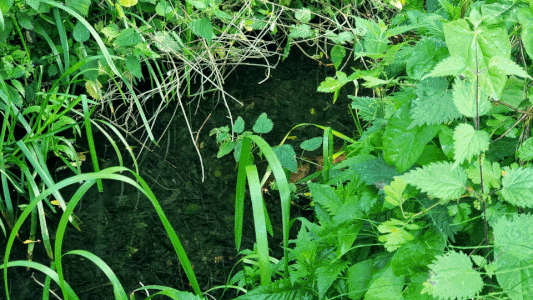
Ez város zöldebb mint az ősfradista vendéglátóm amigdalája, ha kimondom Gera Zoli, pedig West Brom legalább 60 mérföld a City Groundtól.
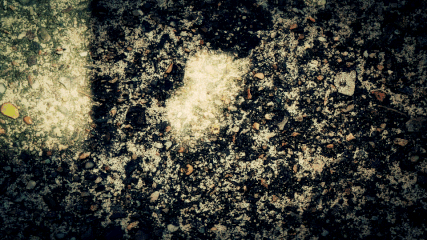
A City Ground a Nottingham Forest otthona, és nem hogy nem zöldek, mint a Robin Hood szálon várnánk, hanem vörösek, ők a Reds, és friss élménye még az itt lakóknak, ahogy tavasszal kiharcolták a Premier League-ben maradást, ősélményük pedig, hogy egyszer lettek bajnokok, de kétszer nyertek Bajnokcsapatok Európa Kupáját – másodszor a címvédő jogán indulva – aminek hála Brian Clough menedzser szobra a főtéren áll. 100 méterre a Ciy Groundtól, a Trent River túlpartján található a jelenleg ötödosztályú, fekete-fehér csíkos The Magpies, az 1862-ben alapított Notts County FC stadionja, a Meadow Lane. Mindkét klubot azonos tisztelet övezi.
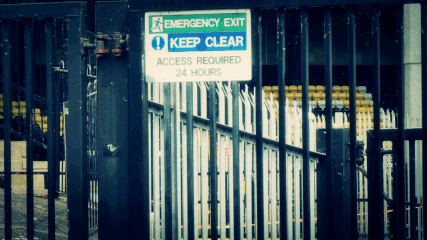
Zöld – ha egy patak/folyó vize bezöldül, az nem egy szívderítő látvány. De mi a helyzet a csatornákkal? Első két napunk nagy részét az 1792-től 1996-ig épült, 23.7 km hosszú Nottingham Canal mentén töltöttük.
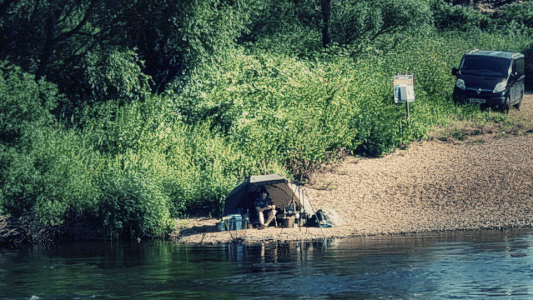
Az egyik kedvenc történetem a modern kor történelméből az angol csatornarendszer kiépítése a kvékerekkel, a ló vontatta uszályokkal, ipari forradalommal, s ennek egy ékes példánya a nottinghami, mely Beeston Lock-nál ágazik le a Trend-ről, Waterfallba taszajtva azt, lenyúlva ezeket a művészi szépségű bárkákat a folyótól egy szakaszon.
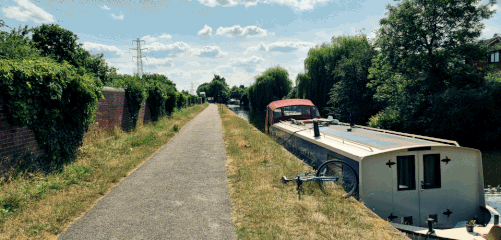
A Nottingham Canal ugyanis párhuzamosan haladva a folyóval, Meadow Lane-nél, a már említett két stadion között talál vissza bele.
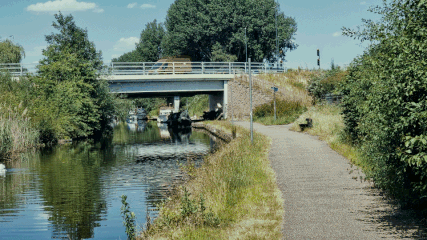
A Canal fontos tartozékai a régi uszályok top-top-ra update-elt kis csodái, a bárkák, amik szolgálnak hétvégi szórakozásra, de sokak számára otthon és élőhely.

Egészen döbbenetes látni ezeket kedves, hippiszerű létformákat, minden bárkából más zene szűrődik ki, néhányan kint bandáznak a parton, s persze mindenki köszön egymásnak, meg némi smalltalk. Azért eszembe jutott, a tél Angliában is hideg – az milyen lehet nekik?

Néha fűszag is járult a látványhoz, apropó: drogliberalizáció. Már első alkalommal is feltűnt, UK-ben mennyire felnőtt hozzáállás övezi ezt a hazánkban zsigerekbe sütött kádéenpébilloggal jutalmazott sátáni tevékenységet. Nottinghamben is sikerülhet bármikor kisfüstfelhőbe futni, és az a felfogás, ha tudsz viselkedni, akkor csak csináld!

Az egyik jelenet a tudatos vásárló unortodox példájaként zajlott le szemeim előtt. Fehér havat rendelt a helyi magyar diaszpóra egy kisebb csapata az egyik ismert social media felületen futó hirdetésről, ami errefelé bevett szokás („egész évben Ozora”). Jóbarátom meséli, hogy a Brexit után könnyebb volt füvet kapni, mint tojást. Szóval összedobják a fontokat, telefon, és mint a pizza, 20 percen belül meg is érkezik a rendelés. A lány a csapatból mérleget hoz, mivel ettől a szolgáltatótól először rendeltek, mérni kell! A mérésnél 0,7 jön ki az 1-re, lefotózza és megreklamálja. Újabb 20 perc múlva megérkezik a hiányzó mennyiség, elnézés kérések mellett. Ezt, a pinyősanyarún edződött agyammal elég nehéz elhinnem, pedig megtörtént.

Madárnak lenni remek lehet itt, láthatóan sokan vannak, biztonságban érzik magukat, azt pedig már korábban is észrevettem, hogy a parkokon belül direkt nekik kerítenek el vízzel körbevett szigeteket, hogy nyugodtan költhessenek. Itt pedig hatalmas vízfelületek, nyugodt partok várják őket mindenfelé.
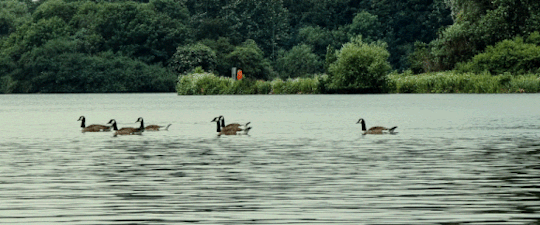
Apropó, az angoloknak a hal, az a tengeri hal. Az édesvízi halat meg se eszik, a horgászok is mind visszadobják őket. Érteeed? Hogy mondják angolul, hogy halászlé?
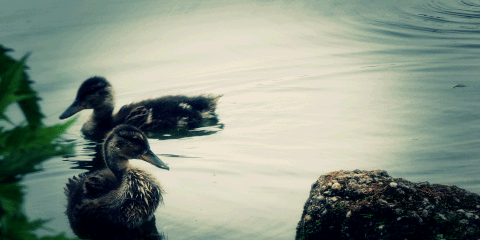
Természetesen a pub-ok nem maradhattak ki. Már első albioni utamon is megfogott az ottani kocsmakultúra. Sose szerettem a lágereket. Nálunk pedig a kézműves forradalomig csak ezek voltak, és a piacot most is uralják. Angliában az ale az őshonos sörtípus, amiben szinte nincs is szénsav és pumpálva csapolják, langyosan. Ebből egyet ittam, azt is megbántam, mert ebben a melegben rettenetes. Viszont jellemzően 10-20 sörcsapról lehet választani, ahol az én favoritjaim, az IPA-k, APA-k, NEIPA-k gyönyörei várnak. Érdekes, hogy ezek a pubok is többségükben franchise-ként működnek, és Newcastle-től Brighton-ig döntően ugyanaz piaportfolió és dizájn várja az embert. A resti/presszó szintű kocsmákat onnan lehet megismerni, hogy 4-5-féle sörük van, és mind import láger, Carlsberg és Heineken féle székelybúbánatok.

A magyar diaszpóra 10-15 tagjával is találkoztam rövidebb-hosszabb időre. Érdekes látni, hogyan alkalmazkodnak a helyi viszonyokhoz, és azt is, miként tekintenek hazájukra. Elhangzott, hogy 10, maximum 14 napot bírnak ki itthon, akkorra úgy érzik, már eluralkodik rajtuk az a magyaros depresszió, leszaromság, amivel kint szinte nem is találkoznak. Ottlétemkor a legnagyobb problémája kintieknek az volt, hogyan szereznek jegyet Azahriah valamelyik angliai koncertjére ősszel.
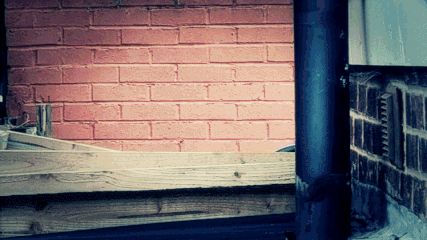

Szombaton egy franya zenés partyba is meghívást kaptunk, neve is van a helynek: 209. (ez maga a házszám)
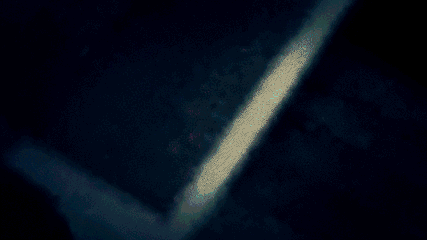
Négyen-öten bérelnek Nottingham arab/afro negyedében, Hyson Green-ben, közelebbről Bobbers Mill-ben egy tipikus téglahomlokzatos sorházban, egy klasszikus angol lakást. Ez a kis alapterületen, háromszintes vertikális elrendezés, ahol az első-második emelet szűk tereiben laknak/alszanak, a földszint közösségi tér. A köztük való közlekedés pedig a magyar szabvánnyal köszönőviszonyban se lévő, balesetveszélyes lépcsőkön zajlik. Na igen, a lépcsők. Őskedvencünknek, a cardiffi Underworld-nek volt Push Upstairs és Push Downstairs című slágere – ami tök másról szól – nekem mégis gyakran eszembe jutott, mert a pub-ok szinte mindegyikében meredek lépcsők vezettek afféle installált drunk-filterként vagy le a pincébe, vagy fel az emeletre, szóval ne az utolsó pillanatban indulj el!
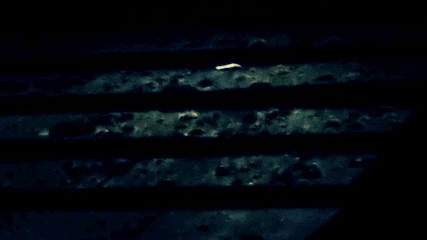
A délutáni sütögetés közben is már Gregori Pekk keverte a zenét a nappaliban, hárman-négyen mindig táncoltak is, gyakorlatilag a buli zárásáig. Nem esett szó a -1. szintről, ugyanis a srácok – az eredetileg szeméttároló – pincét teljesen kipofozták (lásd a YT csatornán lévő videoikat), és hangszigetelték. A pince hűvös és rogyásik van szintikkel ,dobgépekkel, szekvenszerekkel, minden elektronikus eszközzel, amiken élőben jammelnek (lsd YT csatornájuk), így hallhattam egy rögtönzött 209 crew live-actet is. Mikor eljöttünk, még világos volt, ugyanis az 52 szélességi körön nyáron nagyon soká megy le a nap.

Ez egy zenei blog, így most már maradnék a zenénél. 2004-ben, DJ Suefo barátom, a Mana Mana Recordings tulajdonosa, időnként adott nekem promo cd-ket, hogy az azóta átalakított weboldalára én is írjak kritikákat. Így került a kezembe az em:t records egyik utolsó, és egyben legmagasabb színvonalú válogatáslemeze, az em:t 0004, olyan előadókkal, mint a Red Leb, Andy Hughes, High Skies, Sub, International Peoples Gang vagy a Gel-Sol. Nekem ez a lemez ott van életem Top 10 albuma között, nagy hatással volt rám, és természetesen utána jártam ennek a zseniális nevű kiadónak. Az Em:t Labelt 1994-ben alapította Chris Allen és David Thompson, és 1998-ig működött. 2003-ban pedig Martyn Watson, Tom Smyth és Matt Hall indította újra em:t records néven. Ez alatt a rövidke idő alatt gyakorlatilag megreformálták az addigra kissé kifulladóban lévő ambientet. A fent említett nevek mellett Gas, Qubism, Miasma, Woob, 302 Acid, Gaudi & Testa lemezeit rongyosra játszották évekig az ambient rádióadók.

A kiadó Nottinghamben működött. Így tehát ősi magyar szokás szerint vendéglátóimmal megkoszorúztuk a kétszer is elhunyt em:t hűlt helyét az Old Knows Factory-ben a St. Anns Hill Road-on.
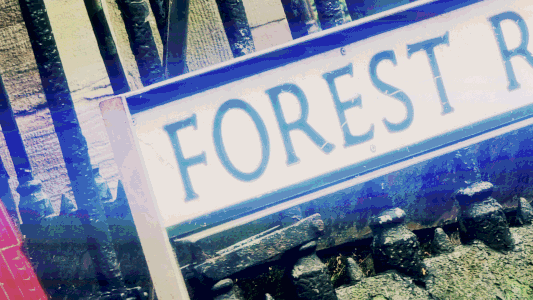
Zárásul pedig álljon itt egy kis rövidke, amit az em:t 0004 ihletett pár éve:
Nottinghamben nagyon hideg telek jártak 2004-ben. Meg hideg tavaszok, és borús őszek, nyuvvadt, szürkés nyarak követték egymást évek óta. Persze nem ebben a sorrendben, még csak az kellett volna! A St. Anns Hill Road monoton téglahomlokzatának árnyékában Martyn Watson, Tom Smyth és Matt Hall dideregve kortyolgatták kávéjukat. Martyn kezében egy borítóterv cidrizett. - Ez valami csiga? - kérdezte Matt Martyn válasz helyett elindult befelé az épületbe – megint Sagant néztél, mi? Egy hatalmas csarnoktérbe léptek be, amelynek közepén egy körülbelül tíz méter magas és széles, 16 méter hosszú neonsárga tojás lebegett és lélegzett lassan. A kifejlett, felnőtt korú amb-et narancs, okker és mérgeszöld foltok tarkították és hullámoztak lassan a testén, amit szürkés rászáradt hab borított. - Beteg. - Beteg – summázta Tom. - Kezdjük el! – és áram alá helyezte a stúdiót. - Mennyink van? - Tíz track. - Annyi elég lehet, de tedd repeatre, úgy indítsd el! Lassú analóg basszusok úsztak be és töltötték meg a teret, majd finom dallamminták kezdek ráépülni. A tojás felvette a ritmust és szelíden rezegve láthatóan követte a zenét. A beteges foltok oldódni kezdtek, helyüket mandelbrot-szerű minták váltották, azok lágyan oszcilláltak, alatta lilásszürke por rakódott a padlóra - Talán megmarad. - Most már rendben lesz.

Lemezmegjelenések
Cristian, a furafiú, már megint olyant villantott, csak pislog az ember. Az a világ, ahonnan Kereszténymadár barátunk hozza zenei ötleteit, számunkra nem létezik. Ezeket ő éri el zsebrevágható dimenziókapujával, vagy addig bandzsít egy szottyos délelőttön, hogy a madár se járig fókuszál, valahova az üveghegyen túlra, a franc tudja, de a technoval foglalkozó művészek között ismeretlen az efféle gazdag sziporka. A Fase Montuno fókusza Dél-Amerika. A kereszténymadár hallhatóan jól érzi magát Quetzal bal szárnya alatt, 53 perc 37 másodperc alatt nyomtatta ki a kontinenst háromdé nyomtatóján. Tudjaabede, de a Tangential Tango-ra kevés argentin mozdulna be. Cristian Vogel 27.(!) albuma a neves és patinás frankfurti Mille Plateaux-nál jelent meg.
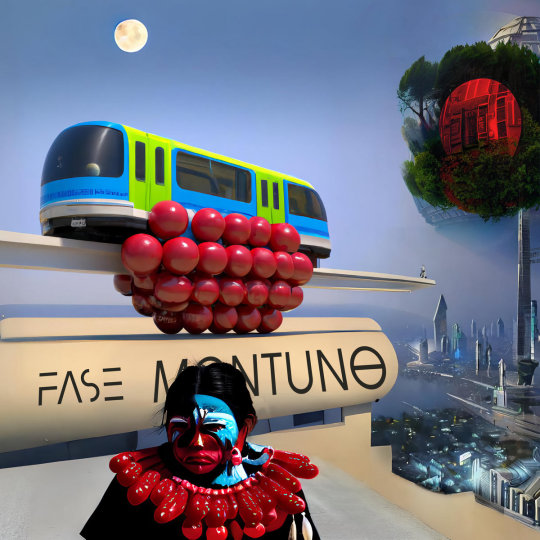
A De Fabriek zenekart és kiadót Richard van Dellen és Andries D. Eker alapította 1977-ben a németalföldi Zwolleban. Egy – főleg magyarhonból nézve – különösen működő közösségről, munkásszövetségről van szó, akik kiadók is, meg zenekar is, jelenleg Jelenleg Richard van Dellen és felesége Louise Nanuru van Dellen, Peter van Vliet, Martijn Hohmann és Peter Ehrmann viszik a stafétát. Az 1988-as Music for Hippies kazettájukat mások mellett a román Khidja update-elte a jelenbe. Sajnos Spotify-on nics, de ITT meghallgathatjátok.
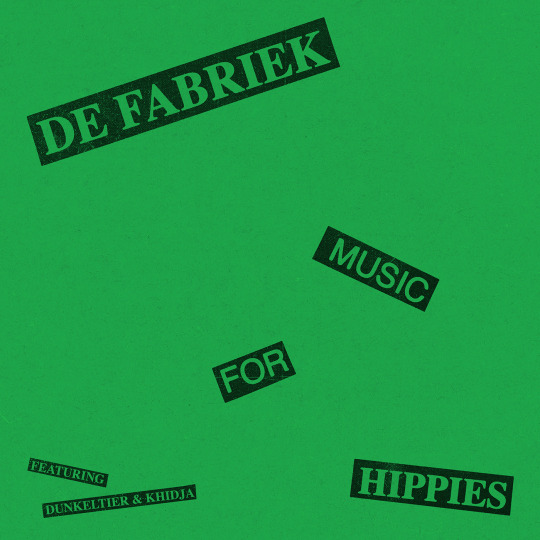
Anthony Linell, aki – megtekintve időben visszafelé a diszkográfiáját, történetét – tényleg nyomott egy inverz Kareem Abdul-Jabbart (aki született Ferdinand Lewis Alcindor Jr.-ként arabult 24 évesen). Anthony 2015-ig Abdulla Rashim vala, némi szünet, bizonytalanság után, amíg Lundin Oil-ként pszeudo-bábozódott, végül 2017-től Anthony Linell-ként öltött testet. Sheltering Skies című maxija a stockholmi Northern Electronics-nál jelent meg.
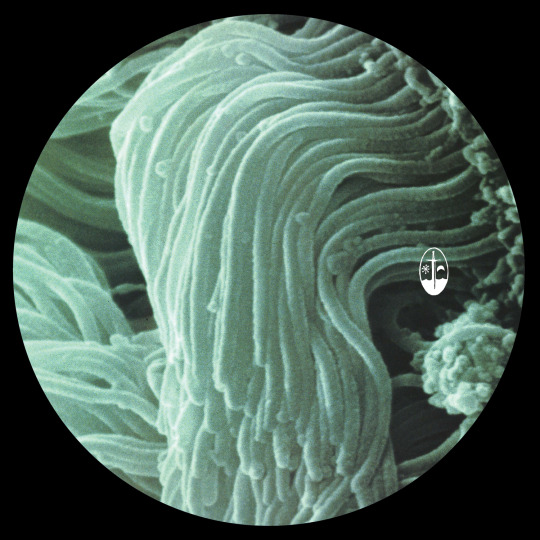
Paul St Hilaire, a dub és techno Horace Andy-je, a ultravékony dublepényeit bluesfeltéttel tálalva készíti. S bátran mondhatja, ez az az íz, amit még nem kóstoltál. Süpped minden, s folyik szét mint Johny Deppnek a szállodai szőnyeg, a párás, és a fülledt levegőben kis beszívva rihegő mikroszéchenyik késztetnek fontolva haladásra. A Tikiman Vol. 1 az album címe, ami gondolom egy makacs fricska a dominikai részéről, hiszen 2003-ban jogi problémák miatt kellett megválnia ettől a számára kedves pszeudótól.

Az én zenei kisvárosomban az Ultramarine egy sarokra van a Tomaga sugárúton a Shackletontól. Valahogy egy tőről születnek ezek a csodás produktumok. Ian Cooper és Paul Hammond kettőse jellegzetes, felismerhető sound-ja ellenére képes új perspektívába helyezni együttesét, akár úgy, hogy némi Tortoise hatást varázsolnak elő kalapból (Dawn). A Send and Return-t teszteltem egy délután fülesben, a Keleti környékén járkálva, s annyira mély emóciókat ébresztett, nehezemre esett megbirkózni a szemem előtt felbukkanó emberek iránti együttérzéssel – meghatás, meghatás.

Megjelenések:
Anthony Linell - Sheltering Skies [2023, Northern Electronics][S] Coco Bryce - Canaan [2023, MYOR][S] Cristian Vogel - Fase Montuno [2023, Edition Mille Plateaux][LP] De Fabriek - Music For Hippies [2023, Platform 23][EP] Humanoid - Sweet Acid Sound [2023, De_tuned][EP] Laurent Garnier - 33 Tours Et Puis S’en Vont [2023, COD3 QR][LP] Maps and Diagrams - A Study Of Ends Or Purpose [2023, Handstitched][LP] Om Unit + TM404 - In The Afterworld [2023, Acid Test][LP] Paul St. Hilaire - Tikiman Vol.1 [2023, Kynant][LP] Rrose - Please Touch [2023, Eaux][EP] Toki Fuko - Spirit Medicine [2023, Astral Industries][LP] Ultramarine - Send And Return [2023, Blackford Hill][LP] Wata Igarashi - Agartha [2023, Kompakt][LP]
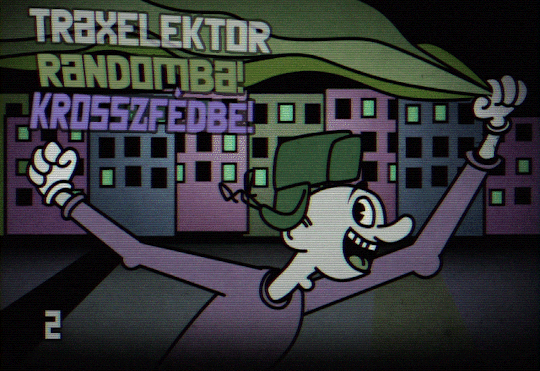
Traxelektor:
Traxelektor 2023 06 Spotify playlist - link (67/77, 6:41/8:02, 87%)
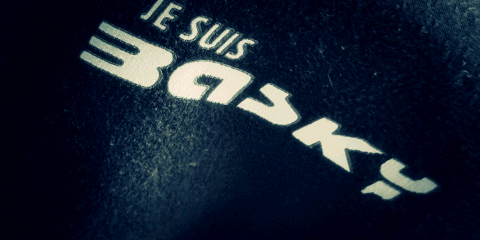
Traxelektor Playlist 2023 06
Abstract Division - A Surreal Odyssey (Fixeer Remix)[Midnight Ensemble - The Remixes - Part 1, Dynamic Reflection] Abstract Division - Dont Fall Asleep (Rrose Remix)[Midnight Ensemble - The Remixes - Part 1, Dynamic Reflection] Abstract Division - Perception Is Reality (DJ Nobu Remix)[Midnight Ensemble - The Remixes - Part 1, Dynamic Reflection] Al Wootton - Devarim [We Have Come To Banish The Dark, Trule]
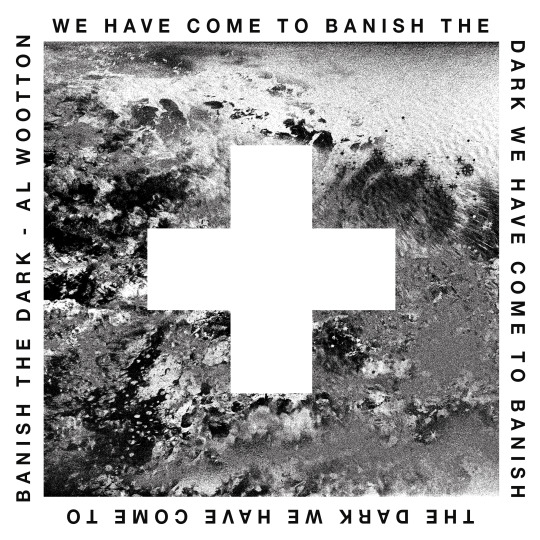
Anthony Linell - Just to Feel Anything [Sheltering Skies, Northern Electronics] Anthony Linell - Sky Crash Over Me [Sheltering Skies, Northern Electronics] ASC - Guiding Lights [The Depths Of Space, Over/Shadow] ASC - Substance [The Depths Of Space, Over/Shadow] Atom™ - Overflow (Fluid Mix)[Seins Fickschn, NN]

Bana Haffar - All That Is Sometimes Not Considered [intimaa', Touch Music] Bana Haffar - Elemental [intimaa', Touch Music] Chocolate Hills & The Orb - Centre of the Triangle [Yarns From The Chocolate Triangle, Orbscure] Chocolate Hills & The Orb - Cracking Kraken [Yarns From The Chocolate Triangle, Orbscure]

Chris Korda - Have A Good One [Not My Problem, I'll Be Dead, yoyaku] Coco Bryce - Canaan [Canaan, MYOR] Coco Bryce - Mordechai [Canaan, MYOR] Cristian Vogel – Aji [Fase Montuno, Edition Mille Plateaux] Cristian Vogel - Labyrinth and Warrior [Fase Montuno, Edition Mille Plateaux] Cristian Vogel - Temples In the Sky [Fase Montuno, Edition Mille Plateaux] Cristian Vogel - Two Wheels Of Fortune [Fase Montuno, Edition Mille Plateaux] David Toop & Lawrence English - Whistling In The Dark [The Shell That Speaks The Sea, Room40]
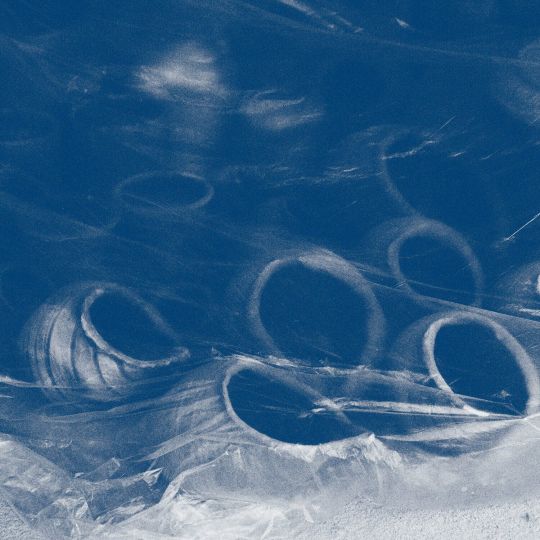
De Fabriek - Come Down (Khidja 5AM Mix)[Music For Hippies, Platform 23] De Fabriek - Lullabye (Dunkeltier - Hey Robot Mix)[Music For Hippies, Platform 23] DYL - Interpretare 1 [Nothing As It Seems, re:st] Function - Aeternum (Meridian)[Green EP, Infrastructure New York]
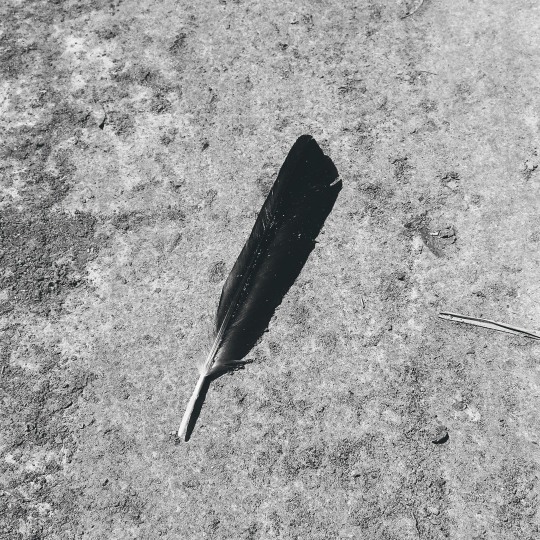
German Army - Last Habitat [Caras Rotas, Faith Disciplines] Greg Foat & Gigi Masin - Viento Calido [Dolphin, Strut] Henry Greenleaf - Bubble Trouble [Dog Eared, YUKU] Henry Greenleaf - Dog Eared [Dog Eared, YUKU] Henry Greenleaf - From Window to Wall [Dog Eared, YUKU]
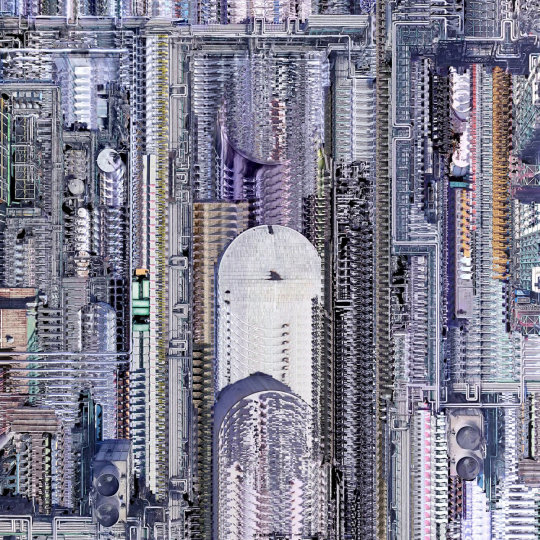
Humanoid - 808 Nation [Sweet Acid Sound, De_tuned] Humanoid - Si-rak [Sweet Acid Sound, De_tuned] Humanoid - Sweet Acid Sound [Sweet Acid Sound, De_tuned] Ilija Rudman - Pulsar Diaries [Pulsar Diaries, International Feel]
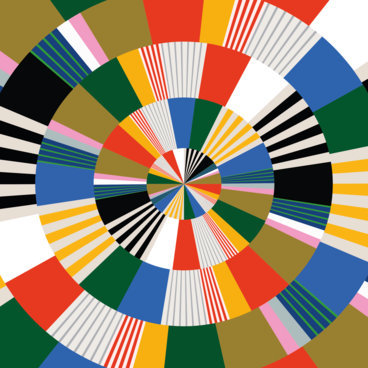
Kike Pravda & Tensal - Protone [Dimensional EP, Senoid] Laurent Garnier - Au Clair de ta Lune [33 Tours Et Puis S’en Vont, COD3 QR] Laurent Garnier - Reviens la Nuit [33 Tours Et Puis S’en Vont, COD3 QR] Laurent Garnier feat. Alan Vega - Saturn Drive Triplex [33 Tours Et Puis S’en Vont, COD3 QR] Laurent Garnier feat. Alan Watts - Tales from The Real World [33 Tours Et Puis S’en Vont, COD3 QR]

Lisene - Square One [Square One, Craigie Knowes] Maps and Diagrams - Brume [A Study Of Ends Or Purpose, Handstitched] Maps and Diagrams - Ceilings [A Study Of Ends Or Purpose, Handstitched] Maps and Diagrams - Raindrop [A Study Of Ends Or Purpose, Handstitched] Maps and Diagrams - Slopewater [A Study Of Ends Or Purpose, Handstitched] Maps and Diagrams - Traverse [A Study Of Ends Or Purpose, Handstitched] Maps and Diagrams - Upland [A Study Of Ends Or Purpose, Handstitched]
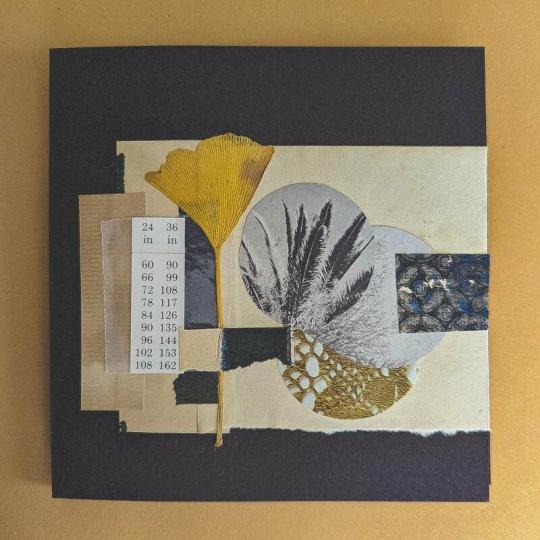
Nahash - A Snake in Your House [A Snake In Your House, SVBKVLT] Nahash feat. Elise Massoni - Davide XV [A Snake In Your House, SVBKVLT] Om Unit + TM404 - London Stock [In The Afterworld, Acid Test] Om Unit + TM404 - Microdose Mondays [In The Afterworld, Acid Test] Paul St. Hilaire - Bright One [Tikiman Vol.1, Kynant] Paul St. Hilaire - In Door [Tikiman Vol.1, Kynant] Paul St. Hilaire - Little Way [Tikiman Vol.1, Kynant] Paul St. Hilaire - Ten To One [Tikiman Vol.1, Kynant] Paul St. Hilaire - The Weather Man [Tikiman Vol.1, Kynant] Pearl River Sound - Breakyweaky [The Amen Experience, Adepta Editions] Pearl River Sound - Rob Of The D [The Amen Experience, Adepta Editions]

Perc - Resistor (Jensen Interceptor's TNG Borg Remix)[Resistor Remixed, Perc Trax] rand - San Gimignano (Remixed by Deadbeat)[Peripherie Remixes, CLIKNO] Rødhåd - Lookittat (Silent Servant Remix 2023 Edit)[Revisited, WSNWG Back To Zero] Rødhåd - Newspeak (2023 Edit)[Revisited, WSNWG Back To Zero] Rødhåd & Vril - Target Line (Vril Remix 2023)[Revisited, WSNWG Back To Zero] Rrose - Rib Cage [Please Touch, Eaux] Rrose - Spore [Please Touch, Eaux]

Si Begg - Buckfunk Beatz [Energie Electrique, Central Processing Unit] Si Begg - Energy [Energie Electrique, Central Processing Unit] Temple Rat feat. Meta - Rooted in the Soil of Your Heritage [, ] Toki Fuko - Spirit Medicine (Part Two)[Spirit Medicine, Astral Industries]
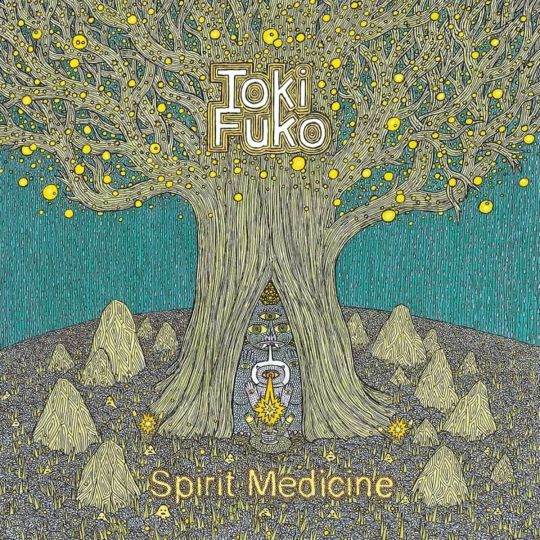
Ultramarine - Dawn [Send And Return, Blackford Hill] Ultramarine - Decima [Send And Return, Blackford Hill] Ultramarine - Mirosa [Send And Return, Blackford Hill] Ultramarine - Xylonite [Send And Return, Blackford Hill] Umwelt - Mind War Acid [VA - Ravexistence, Rave Or Die]

Wata Igarashi - Agartha [Agartha, Kompakt] Wata Igarashi - Burning [Agartha, Kompakt] Wata Igarashi - Ceremony of the Dead [Agartha, Kompakt] Wata Igarashi - Floating Against Time [Agartha, Kompakt]

#traxelektor#zenekritika#zene#zeneajánló#underground#electronic#music#intelligent dance music#england#nottingham#summer
0 notes
Text
From Willie Groves to Neymar Jr. via Cruyff, Denilson & Zidane: The History of World Record Transfer Fees
It was 8 years after Football became a professional sport that the first transfer fee of £100 was made when Scottish striker Willie Groves joined Aston Villa from West Brom in 1893. Sunderland born Alf Common was the first player to command a fee of over £500 in 1902 when he re-joined his local team from Sheffield United. Just six months later he became the game’s first 4-figure signing when he switched Sunderland for Middlesbrough.
The first £1M transfer happened in 1975, but it wasn’t until 17 years later in 1992 that the first £10M move took place. From that summer of 1992, football changed with the sudden influx of huge money from advertising companies worldwide as the newly formed competitions of the Premier League and the Champions League became awash with money. In 1991 the most expensive player was Roberto Baggio at £8M, just 10 years later and that figure had rose to £46M, as the world transfer fee record was broken 9 times in 9 years, and for 6 consecutive summers between 1996 and 2001.
From 1952 up until 1996, the only club outside of Italy to break the world transfer record was FC Barcelona, other than that Italian Clubs had the financial muscle to outspend everyone. As Florentino Perez established Real Madrid as the most marketable club on the planet, they set the new record at the turn of the millennium and broke their own record another 4 times over. United’s £89M purchase of Pogba showed the financial might of the Premier League, before the state-backed PSG obliterated the record by capturing Neymar for £198M, demonstrating the extent to which teams owned by nation states could blow the rest out of the water financially.
The argument of the morality in the kind of spending Football has seen over the last couple of decades has been an evolving one. At first the fans of the game, the majority of whom are working class, were uncomfortable seeing players begin to move for sums of around £30M in the late 1990′s. Institutions such as the Vatican were highly critical, and the media were sceptical with the BBC asking “has the World gone mad?” when Hernan Crespo cost Lazio over 35 million pounds in 2000. However as the 2000′s progressed, attitudes in the media and amongst fanbases began to change, as mega spending from owners such as Roman Abramovich was lapped up. As figures got bigger, they got more and more meaningless, they became just numbers on a page. Now all that mattered to most fans was that they signed as many players as possible, for as much money as possible, the more they cost the better they were likely to be, became most people’s perception. Now if a player didn’t cost a fortune, he couldn’t possibly be good and big expensive transfers became something to celebrate as though it was in itself a trophy, to see your club spend alot of money, which showed ‘ambition’.
After Kaka ended Zidane’s 8-year run as the world’s most expensive player, the record breaking threatened to go on endlessly, with a new world transfer record being set over and over again. That was until the transfer of Neymar to PSG. The new record of £198M set in 2017 was so enormous that it could remain the record for a very long time. We have since seen a change in the way transfers are done, with players now more likely to let their contracts run down in order to secure a move, so clubs can sign them with only a year left on their deal for a reduced price, or else get them on a free transfer when their contract expires. This suits players as that transfer money can be instead spent on giving them a massive signing bonus. However, it feels inevitable that one day perhaps not too far from now, some club will be tempted to bid the sort of money that will guarantee them headlines as they deem a player to be worth close to a quarter of a Billion pounds.
Until that day comes let’s look back on the story of the World-Record transfer Fee, from its humble beginnings when the first transfer fee of £100 was made in 1893 when Willie Groves joined Aston Villa from West Brom, all the way through to that £198M transfer of Neymar in 2017.
Willie Groves- West Brom to Aston Villa, 1893. £100.

Willie Groves made his debut with Hibernian as a 16-year old where he won the Scottish Cup, before moving to newly formed Celtic in 1888. After a couple of years he moved to England signing for West Brom, where he featured in the FA Cup final on the winning side as the Baggies beat Aston Villa 3-0. His performance may have in part enticed Villa to make him the first player to cost £100 as they brought him to their club the next year. Villa were fined by the FA having been deemed to have illegally poached the player, but the club got their consolation by winning the league title at the end of Groves’ first season. Groves returned to Hibernian at the end of that one season however due to a contract dispute.
For Hibernian, Groves played in but lost the 1896 Scottish Cup final against Hearts, remembered as the only one in the competition’s history to take place outside of Glasgow. He then returned to Celtic, but retired quickly afterwards, suffering from tuberculosis. Groves died at the age of just 39.
Alf Common- Sunderland to Middlesbrough, 1905. £1k .

Alf Common began at Sunderland before transferring to Sheffield United after a single season. There he won the 1902 FA Cup. After 3 seasons he wished to return to Sunderland and moved for a new record fee of £520. Just six months later he was on the move again, joining Middlesbrough for £1,000, the first 4-figure signing in Football. Boro were a side struggling in the Second Division and the signing of Common helped them to beat the drop. Aged 30 he switched to Woolwich Arsenal, where he played for a couple of years before moving to Preston North End, whom he helped get promoted to the First Division in 1913 before retiring the following year.
David Jack- Bolton to Arsenal, 1928. £10,890.

After joining Bolton Wanderers from Plymouth Argyle in 1920 for £3,500, David Jack had 8 successful seasons with the Trotters, scoring 161 goals in 324 games. One of those many goals came in the “White Horse Final” the 1923 FA Cup Final against West Ham United, which was the first Football match played at Wembley Stadium. Jack scored the opening goal to become the first man to score at Wembley, in front of an official crowd of 126,047, though estimations for the actual attendance go up as high as 300,000. 3 years on and Jack scored his second FA Cup Final goal to win his 2nd winners medal as his was the only goal as Bolton triumphed over Sheffield United.
In 1928 with Bolton in financial trouble, David Jack became the first 5-figure signing when Herbert Chapman took him to Arsenal. In order to do this, Chapman negotiated with Bolton representatives over drinks in a hotel bar. Chapman’s gin & tonic’s were served to him without gin, whilst under the Arsenal manager’s instruction, the other side were served up double measures. With his mind clear, he haggled Bolton’s asking price down to £10,890, a fee he considered a bargain.
Jack proved to be a bargain, becoming the first player to win the FA Cup with 2 different clubs as he helped Arsenal to win their first in 1930 against Huddersfield Town. This was Arsenal’s first FA Cup win and it kickstarted an era of massive success for the club, Jack a part of the side that won 3 consecutive league titles. Jack retired in 1934 and remains one of only 3 players in English Football history (along with Jimmy Greaves & Alan Shearer) to score over 100 top-flight league goals for two clubs. David Jack also won 9 England caps, scoring 3 times.
Bernabe Ferreyra- Tigre to River Plate, 1932. £23k.

Bernabe Ferreyra had the distinction of being the first player outside of England to set a new transfer record when the Argentine moved from Tigre to River Plate in 1932 becoming the first player to cost more than £20,000. He remained the World’s most expensive footballer for 17 years, the longest thus far that anyone has held the title. Ferreyra was known by a multitude of nicknames such as ‘the fierce’, ‘net breaker’ and ‘Balazo’ (gunshot). These nicknames came out of reverence for his fearsome shooting power, which helped him to net 187 goals in 185 games for River. Independiente goalkeeper Fernando Bello injured both his wrists saving a penalty from the force of Ferreyra’s kick, but the forward suffered injuries of his own due to rough treatment from defender’s looking to find any way to stop him scoring. Ferreyra was forced into early retirement at the age of 29, but he will forever be remembered for his goal scoring prowess.
Hasse Jeppson- Atalanta to Napoli, 1952. £52k.

Ferreyra’s record was finally broken in 1949 as Johnny Morris departed Manchester United for Derby County, and 3 years later Hasse Jeppson became the first player to move for a sum of over £50,000. The Swedish striker began at domestic sides Örgryte and Djurgårdens before becoming the second Swede to join an English team when he appeared 11 times for Charlton Athletic. From there he moved to Atalanta where 22 goals in 27 league games convinced Napoli to break the world transfer record. For this Napoli supporters nicknamed him “the Bank of Naples”. Jeppson scored 52 times in 112 league games, before finishing his career after a season with Torino. Jeppson won 12 Sweden caps and scored 9 goals, including 2 at the 1950 World Cup.
Luis Suarez-Barcelona to Inter Milan, 1961. £152k.

Spanish midfielder Luis Suarez became Football’s first six-figure signing when he left FC Barcelona for Italian Giants Inter Milan for £152,000. El Arquitecto (the architect) began his career with local club Deportivo La Coruna, before joining Barcelona in 1955. He won back-to-back league titles with the club alongside other cup competitions. His contributions saw him win the 1960 Balon D’or and to this day he remains the only Spanish-born player to win the award.
Suarez’s final game for Barca came in the 1961 European Cup final, as the Catalans were beaten 3-2 by Benfica. The Architect had a one-in-two goal ratio for Barcelona in La Liga, but aside from goals, Suarez’s passing range and creativity were what made him such a special player. Upon joining Inter, Suarez transitioned into a deeper lying playmaker in Helenio Herrera’s ‘Grande Inter’ team which dominated in the early to mid 60′s. Between 1963 and 1966 Suarez helped Inter to lift 3 Serie A titles, 2 European Cups and 2 Intercontinental cups. The Spaniard in the end totalled 328 games for Inter in 9 years, scoring 55 goals. Suarez also won 32 Spain caps, scoring 14 goals. In 1964 he helped his country win their first major honour as they won the European Championships beating Soviet Union in the final.
Angelo Sormani- Mantova to AS Roma, 1963. £250k.

Brazilian born striker Angelo Sormani began his career at Santos, where he was understudy to Pele, before breaking into the team and playing alongside the legendary striker. Sormani moved to Italy in 1961 where he joined A.C Mantova and earned the nickname the ‘White Pele’. The nickname put him on the radar of many top clubs and in the end it was AS Roma who made him the most expensive player in the world and the first to cost a quarter of a million pounds. Aswell as the 500 Million Lire Roma paid, they also exchanged a further 3 players to Mantova. The striker however failed to live up to his promise in Rome and left for Sampdoria after just one season. He again struggled there, but AC Milan decided to give him a shot in 1965. There he finally established himself as one of the league’s best players, delivering on his early promise as he helped Milan to a league title and then their first ever European Cup in 1969, scoring his team’s 4th in a 4-1 win over Ajax.
Pietro Anastasi- Varese to Juventus, 1968. £500k.

Pietro Anastasi began his career in Serie D, before joining Serie B outfit Varese. After helping Varese to promotion, Anastasi scored a hattrick in Varese’s shock 5-0 victory over Juventus. This prompted Juventus to make him the first player to cost half a million pounds, when they brought him to Turin in 1968 for 650 million Lire. In 8 years with the club Anastasi won 3 league titles and was also a runner-up in the 1973 European Cup final as Juventus lost 1-0 to Ajax. The striker scored 130 goals in his time with The Old Lady, which currently has him seated 7th on their all-time scorers chart. Anastasi also won 25 caps for Italy, debuting in the 1968 Euros final against Yugoslavia, he scored 8 goals for The Azzurri.
Johan Cruyff- Ajax to FC Barcelona, 1973. £920k

Hendrik Johannes "Johan" Cruyff brought football close to its first £1M player when he joined FC Barcelona from Ajax for £920,000 in 1973. Cruyff was taken on by Ajax as a youth without the need of a formal trial, after an Ajax youth team coach spotted the youngster’s immense talent on a neighbourhood playground. After breaking into the team as a teen Cruyff quickly established himself as the team’s star player, scoring 25 goals in 23 appearances in his second season at senior level. Cruyff won 3 successive Eredivisie titles with the first coming in 1966, he was also part of the first Dutch team to play a European Cup final in 1969, though Ajax went down 4-1 against AC Milan.
2 years later Ajax were back in the final, this time lifting the trophy with a 2-0 success over Panathinaikos. That year Cruyff won his first of three Balon D’or awards. The following season, Ajax retained the European Cup, again winning 2-0 in the final, this time against Inter Milan, with Cruyff bagging both goals. Ajax then became the first side since Real Madrid in the 1950′s to win 3 successive European Cups when they beat Juventus 1-0. In 9 years with his boyhood club Cruyff scored 257 goals in 329 games, and won 5 league titles, 4 Dutch cups and 3 European Cups.
As the face of ‘Totaalvoetbal’ (Total Football) Cruyff had established himself in his native country as by far the best footballer on the planet. It was time to take that step up to the next level, by establishing FC Barcelona as one of the world’s best. In his first season, he helped secure their first La Liga title for 14 years. On the way to that honour, he inspired the team to a 5-0 triumph over hated rivals Real Madrid, which led a New York Times journalist to declare: “Cruyff has done more for the spirit of the Catalan people in 90 minutes than many politicians in years of struggle.” Later during his time with the club, Cruyff also lifted the Copa Del Rey trophy, before moving to America to play for the Los Angeles Aztecs.
Cruyff scored 85 goals in 227 games for Barca, but his impact could not be measured in mere statistics. During his time as a player he showed Barcelona a new way of playing the game, a style he then went on to perfect as club manager as he led Barcelona’s ‘Dream Team’ to 4 successive league titles and the club’s first ever European Cup in 1992. One of his disciples in that Dream Team was Pep Guardiola who would build off Cruyff’s principles, and use them as the foundation to bring Barca’s greatest ever era. Johann Cruyff has had a greater influence on Football than anyone else, and other than Ajax, no club has been more influenced than Barcelona. So for that reason, it’s probably the best money they have ever spent.
Giuseppe Savoldi- Bologna to Napoli, 1975. £1.2M.

Giuseppe Savoldi was the first £1M footballer, when Napoli paid two billion Lira (£1.2M) to Bologna for his services. The striker had began his career with Atalanta before joining Bologna in 1968. In 7 years with Bologna, Savoldi won 2 Coppa Italia’s and he won a third in his first season in Naples. The striker was a popular figure during his 4 years with Napoli scoring 55 goals in 118 Serie A appearances, though he could not lead a side on the decline to a first Scudetto. Savoldi then returned to Bologna, but was involved in the headlines once more in May of 1980, when his role in an underground betting scandal saw him receive a three-and-a-half year ban from the sport, reduced to two on appeal.
Paulo Rossi- Juventus to Vicenza, 1978. £1.7M.

Paulo Rossi began his career as a winger at Juventus though knee injuries which required three significant surgeries limited him to just 3 appearances in his first 2 seasons, none of which came in the league. Rossi faired little better on loan at Como featuring just six times for them. The young winger was then loaned to Serie B side Vicenza, where he underwent a significant transformation. Converted to a striker by coach Giovan Fabbri, Rossi emerged as a natural at finding space in the box and finishing. He thrived in this new role, now able to stay fit for the first time he fired Vicenza to promotion with 21 league goals.
After top scoring in Serie B, Rossi became the first player to back that up by top-scoring in Serie A the very next season. This time he netted 24 in 30 Serie A appearances as Vicenza finished 2nd only to Juventus, who in an unusual arrangement still co-owned Rossi along with Vicenza. However, after Rossi’s stock grew only further with his displays at the 1978 World Cup, both clubs were called upon to find a sole owner for the player. With a sum of 2.6B Lire (around £1.7M) Vicenza made Rossi the World’s most expensive footballer. However Vicenza were relegated back to Serie B, and Rossi loaned to Perugia, so he could continue playing in Italy’s top division.
In 1980, things turned bleak for Rossi, as he was implicated in the Totonero betting scandal and banned from Football for 3 years, this was later reduced to 2. Despite his ban, Juventus signed him back to their club in 1981. Rossi was eligible to compete at the 1982 World Cup, though he had played just 3 matches across the last 2 seasons because of the ban. In Italy’s first 3 games, he failed to score as Italy failed to beat Poland, Peru or Cameroon, only making it through to the next stage in 2nd place by virtue of goals scored, with 2. Rossi was described by Italian Journalists as a “ghost aimlessly wandering around the field” but manager Enzo Bearzot persisted with him for the second group stage and in the decisive game against Brazil, Rossi netted a hattrick to put Italy into the final 4.
He then bagged both goals in the semi-finals as Italy dispatched Poland to take their place in the final against West Germany. Rossi opened the scoring as Italy took the World Cup with a 3-1 win, and Rossi picked up the Golden Boot with all six of his goals coming in his last 3 games, having failed to score in his first 4. Recently a disgraced figure in a betting scandal that had rocked the nation, Rossi was now a national hero, the key player in winning Italy’s first World Cup since 1938.
Diego Maradona- Boca Juniors to FC Barcelona, 1982. £3M.

Diego Armando Maradona made his professional debut aged 15 for Argentinos Juniors. After 5 years in which the young Argentine scored 116 goals in 166 games, he was transferred to Argentine giants Boca Juniors in 1981. 28 goals in 40 games helped Boca to win the Primera Division, and following Maradona’s first World Cup in 1982, FC Barcelona made him the most expensive player in history, at £3M.
Maradona’s first season saw him lift the Copa Del Rey as Real Madrid were beaten in the final, but it had been far from a complete success. Diego quickly clashed with manager Udo Lattek, taking exception to his demanding early morning training sessions. Hepatitis and a lack of protection from referees led to prolonged spells on the sidelines. Maradona’s problem with Lattek was removed when the German coach was sacked and replaced with Maradona’s former national team manager Cesar Menotti. However Diego had a greater problem brewing with the Barcelona board, in particular club president Jose Luis Nunez, who struggled to maintain authority over the natural rebel Maradona, who had begun his cocaine use and threw regular wild parties late into the night, such behaviour filtered up the chain of the command to Nunez.
Maradona’s second season was typified by an on-field rivalry with Athletic Bilbao, then champions of Spain. The Argentine had long been complaining about the harsh treatment he received from opponents which largely went unpunished by referees. This culminated in Maradona being left side-lined for 3 months with an injury first thought career threatening by the “Butcher of Bilbao” Andoni Goikoetxea. A few weeks after his return to fitness, Maradona lined up to face Bilbao again, this time at the San Mames stadium. Maradona led his team heroically through another brutal match, scoring both goals in a 2-1 win for his side in one of the dirtiest matches seen at the stadium.
Maradona’s duels with Bilbao didn’t end here though, and they would reach a stunning conclusion in the 1984 King’s Cup final infront of 100,000 spectators and half of Spain’s watching public. After a 1-0 defeat featuring the usual Bilbao treatment whenever Diego went near the ball, and racist insults towards him regarding his Father’s native American Indian ancestry, he was given a ‘fuck off’ sign by unused Bilbao substitute Sola, and Maradona subsequently knocked him to the floor before kneeing him out cold. Chaos ensued with a mass brawl involving all the players, with flying kicks everywhere you looked. Maradona was at one stage knocked to the floor with a Bilbao player standing over him, when out of nowhere a teammate jumped in with a huge kick to the players back sending him flying. The brawl resulted in 60 people being injured as fans rained missiles down on players, coaches and photographers. Maradona left the pitch with his Barcelona shirt torn, he would never wear one again.
Diego Maradona- FC Barcelona to Napoli, 1984. £5M.

Despite any concerns over injuries or behaviour, Maradona with 38 goals in 58 games for the Blaugrana was the still the most desired player on earth. Aswell as for his talent, the Maradona signing had political motivations. The North vs South divide in Italy was at its most tumultuous. Upon hearing of Juventus’ interest in signing the Argentine, Napoli were determined to get one over on the more illustrious then-champions, who already boasted that summer’s standout player at Euro 84, Michel Platini. Maradona chose the poorer, economically disadvantaged South, a region that had never produced a Serie A winner. Napoli, a club formed in 1926 that had to that point only won 2 major trophies, had signed the best player in the world, for a record fee of £5M.
Maradona found himself feeling instantly more at home than he had ever felt at Barcelona. The poor background he came from aswell as having a Mother of Italian descent gave Maradona an immediate affinity with the city of Naples, and he could also relate to the feeling of being looked down upon that Neapolitans felt from those in the more affluent and politically prioritised North.
75,000 Napoli supporters packed into the Stadio San Paulo to see the official presentation of Diego Armando Maradona as a Napoli player. For all present that day, the Saviour had arrived. As one local newspaper put it “despite the lack of a mayor, houses, schools, buses, employment and sanitation, none of this matters because we have Maradona."
Though the team he was joining had a modest history to date, the league he would playing in was by far the best and most competitive in the world. Though a defensive league with emphasis put on the ‘Cattenacio’ style of play, featuring tight man-to-man marking and a sweeper, Maradona could atleast rely on better protection from referees than he’d received in Spain.
Hellas Verona were champions for the only time in their history in Maradona’s debut season, with Napoli having to settle for 8th place. This improved to 3rd in the following year, then in Maradona’s 3rd season he hit the peak of his considerable powers. Fresh off the back of inspiring Argentina to the 1986 World Cup trophy, his encore was delivering Napoli to the promised land as they took their first ever Scudetto, with a league double over Juventus proving decisive. Winning Serie A sparked a week-long party in Naples, so often the butt of the North’s jokes, it was they who were laughing now. Maradona had put Napoli and the entire city of Naples on top of Italy, and in doing so his standing amongst the people could not have been any higher. In the eyes of the adoring Neapolitans he was more than a footballer, more than a man even.
Maradona and Napoli were unable to retain their crown and problems between Maradona and Napoli president Corrado Ferlaino began to materialise. Napoli who had so far accepted his unwillingness to be controlled had grown frustrated at his missing of training sessions and the following season with Maradona injured or missing from training all the more regularly, Napoli ended further away from the Scudetto. Though still 2nd they finished 11 points behind Internazionale and were beaten in the Coppa Italia final. But there was redemption in the Uefa Cup which Napoli won beating Stuggart in the two-legged final, after dispatching Juventus and Bayern Munich to reach it.
After a slow start to the 89-90 season, with the World Cup that summer looming ever closer, Maradona’s motivation soared again and he had his most prolific season for Napoli, scoring 16 in 28 league games as they finished 2 points above Milan to take the Scudetto for the 2nd time in 4 years. Maradona had responded to the adversity by climbing back to the top, it was the final time in his career he would sit there.
Diego’s time at Napoli would end unceremoniously. During police investigations into organised crime in Naples, Maradona was heard on tape requesting cocaine and prostitutes. This led to a subsequent investigation into him, at which time Napoli chose to abandon their lax approach to drug testing, and Maradona was suddenly tested twice, both by Napoli doctors and outside doctors brought in by the club. Both tests returned positive and Diego received a 15-month ban from Football. Napoli finished the season in 8th, where they finished in Diego’s 1st season with the club. The cycle had been completed and Maradona’s Neapolitan dream had turned into a nightmare.
However, absence made the heart grow fonder, and Maradona and Napoli would always be remembered for the love story it had once been, where Maradona briefly found a home and played the best football of his career to lead Napoli to heights they’d never scaled before. He scored 115 goals in 259 games for the club and won 5 trophies in his 7 years with the club.
Ruud Gullit- PSV to AC Milan, 1987. £6M.

Ruud Gullit began his career with HFC Harlem, after 3 seasons he was taken by Feyenoord. Gullit completed a league and cup double in his second season with the club, where he won the Dutch Footballer of the Year award. After his 3rd season, he transferred to PSV Eindhoven, where he established himself as a truly world class player. In his two seasons with the club, PSV were champions both times and Gullit scored 53 times in 78 appearances.
Milan President Silvio Berlusconi was determined to return the club to its glory days of the 1960′s and thought Gullit was a player to help bring that about. He paid a world record price of £6M to bring him to the San Siro. Marco Van Basten also joined that summer from Ajax. During that first season, Gullit won the 1987 Balon D’or award and dedicated it Nelson Mandela, at that time still imprisoned in Apartheid South Africa. Under new coach Arrigo Sacchi, Milan won their 1st Scudetto in 9 years to qualify for the following seasons European Cup.
In a 5-0 European Cup semi-final win over Real Madrid, Gullit picked up an injury and was in a race against time to be fit for the final. He played and scored twice as Milan beat Steaua Bucharest 4-0 to win their first European Cup since 1969. The following season which saw fellow Dutchman Frank Rijkaard added to the squad, Gullit appeared just three times for Milan, though one of them was in the European Cup final and again he was on the winning side as Milan beat Benfica 1-0. Milan’s hold on the European Cup was halted in bizarre circumstances the following season when they refused to complete a game against Marseille after it had been halted in the 87th minute due to floodlight failure. Milan were barred from all European competitions the following year.
The lack of European distraction helped Gullit and Milan focus domestically as they won the Serie A for the first time since the Dutchman’s first season with the club. Now under the tutelage of Fabio Capello they went the full 34-game league season without losing a game. The run was ended after an incredible 58 game run, though Milan still managed to retain their title. Though Gullit had by this time lost his place in the side and didn’t make the bench for the first ever Champions League final in 1993, which Milan lost to Marseille.
Gullit was then loaned out to Sampdoria, he briefly returned to Milan before joining Sampdoria on a permanent deal. He finished his career at Chelsea, though he will be forever best known for his time spent at AC Milan and with the Dutch National team, where along with Van Basten and Rijkaard, he was a part of one of the greatest trios Football has ever known. Gullit appeared 66 times for the Netherlands and scored 17, including the opener in the 1988 Euros final, where the Dutch won their sole major honour to date with a 2-0 win over the USSR.
Roberto Baggio- Fiorentina to Juventus, 1990. £8M.

Roberto Baggio began his career in Serie C with Vicenza. After 3 seasons with the club, he was 2 days from finalising a deal to move to Fiorentina, when he shattered both his ACL and the meniscus of his right knee. His career was in serious threat, but Fiorentina kept faith in him and signed him anyway. After a season on the sidelines, Baggio suffered another serious injury to his knee just a week after his Serie A debut, this one required 220 stitches to have it rebuilt. Baggio returned at the end of the season and with a free-kick scored a goal which saved La Viola from relegation. Baggio was finally able to stay fit the following two seasons and prove his worth with 87 appearances in that time and 43 goals, which ensured he would be a starter for Italy as they hosted the World Cup in 1990. Baggio scored twice at the World Cup, including the goal of the tournament against Czechoslovakia. He was left out of the starting 11 for the Semi-Final against Argentina, with the more experienced Vialli chosen, a decision which was criticised.
Baggio had become a hero to Fiorentina fans, and the teams star player. However, he was sold to club rivals Juventus for a world record fee of £8M. This led to riots on the streets of Florence, where 50 people were injured. When Baggio returned to face Fiorentina in the colours of Juve, he refused to take a penalty, which was subsequently missed and picked up a Fiorentina scarf thrown at him as he left the pitch when substituted. This incident made Juventus supporters reluctant to accept him, though Baggio performed on the pitch with 27 goals in his first season, despite the team struggling in the league especially. Baggio won over the fans in his second season as he became one of the team’s leaders as Juve performed better finishing runners-up in Serie A.
Baggio was made captain the following season and responded by scoring 30 goals in all competitions. These goals helped Juventus on the way to winning the UEFA Cup as they thumped Borussia Dortmund 6-1 on aggregate in the final, Baggio scoring two of them. Roberto was the recipient of the 1993 Balon D’or award and aswell the FIFA World Player of the Year award. Baggio and Juventus finished 2nd to Milan for a second time in three years in 1994, and that summer they appointed Marcelo Lippi as manager. Baggio was injured for some of the season, and when fit others were occasionally preferred such as the young Alessandro Del Piero. However Baggio still played his part in bringing Juventus their first league title in 9 years. In 17 league games, he scored 8 and assisted 8, including 3 in the 4-0 win over Parma which secured the title. Baggio also scored 4 in 8 as Juventus reached the final of the UEFA Cup, but they were defeated by Parma.
Baggio departed Juve that summer for AC Milan, after 115 goals in 200 games for the club. The ‘Divine Ponytail’ went on to play for Bologna and Inter Milan before retiring at Brescia. Baggio is widely regarded as one of the best players of his generation, one of Italy’s best ever players and one of the finest number 10′s Football has ever seen, for his elegance and impressive numbers in scoring and assisting others.
Baggio won 56 Italy caps and scored 27 times, including 9 World Cup finals goals. He scored 2 at Italia 90 and 5 at the 1994 World Cup, all of them in the knockout rounds as he led Italy to the final scoring 5 of the team’s knockout stage goals. In the final against Brazil, he missed the crucial penalty in the first ever World Cup decided by a penalty shootout. He scored twice at the 1998 World Cup but Italy were eliminated by France. He is the only Italian to have scored in 3 World Cups.
Jean-Pierre Papin- Marseille to AC Milan, 1992. £10M.

Jean-Pierre Papin started out at Valenciennes before moving to Club Brugge. After just one successful season he returned to France, now with Olympique Marseille. Papin became captain of Marseille and won the league 4 years in a row, in those 4 years he scored over 30 goals across all competitions in every season. Such prolific scoring saw AC Milan make him the first 8-figure signing, paying £10M to secure his signature. However, the three-foreigner rule limited Papin’s game time as he competed against a whole host of foreign imports to start games for AC.
He came off the bench in the 1993 Champions League final as Milan were defeated by his former side Marseille. Papin’s game time was limited yet further the following season and after it, the French forward was signed by Bayern Munich for £2.1M. Papin scored 31 times in 63 games for the Rossoneri, and won 5 trophies including 2 Serie A titles and the 1994 Champions League, though he did not make the bench for Milan’s 4-0 win over Barcelona. Papin lost his scoring touch at Bayern, and returned home to France where he played for Bordeaux and Guingamp before retiring.
Gianluca Vialli- Sampdoria to Juventus, 1992. £12M.

Striker Gianluca Vialli was signed by Sampdoria from Cremonese after 3 full seasons with the Serie B side. His 8 seasons with Sampdoria took in the greatest years in the clubs history as they won the Serie A for the first time ever in 1991, aswell as the Cup Winners Cup and 3 Italian Cups. They also reached the European Cup final for the one and only time in their history, but were narrowly beaten 1-0 by Cruyff’s Barcelona. The 1992 final was Vialli’s 327th and last match for Sampdoria, he scored 141 goals for the club.
£12.5M was spent by Juventus to bring him to the club, and in his first season he helped them to lift the UEFA Cup. He made only 10 league appearances in his second season, but the following year he was back scoring 17 in 30 league games as he led Juventus to the Scudetto. In his final season with Juve, Vialli was the team captain as they won the 1996 Champions League in his last match for the club, beating Ajax on penalties. Vialli subsequently moved to Chelsea, where he finished his career. Vialli is remembered for his versatility as a forward which allowed him to play on the wings, through the middle, or even deeper roles in the midfield such as the playmaker role, such was his ability to fashion chances for others. Vialli was known for having exceptional technical and physical qualities, combining natural dribbling skills and ball control with pace, stamina and strength.
Gianluigi Lentini- Torino to AC Milan, 1992. £13M.

1992 was an integral year to the modern history of Football. The European Cup rebranded to the Champions League and the old English First Division became the Premier League. However, whilst English Football’s most expensive player for its inaugural Premier League season was Alan Shearer, who cost Blackburn Rovers £3.6M, Italian clubs were that same summer smashing the World-record transfer fee on 3 separate occasions. At the beginning of the summer, Baggio held the record at £8M for his move to Juventus in 1990. Across 2 months in 1992, the world record was broken 3 times, first by Milan to sign Papin, then by Juventus to bring Vialli, and finally Milan not to be outdone took the record back when they paid £13M for Gianluigi Lentini. The young winger was still seen as a mercurial talent, who at the age of 23 was still largely unproven. Lentini was perhaps the first player to move for a huge sum based more on the player he might become, rather than the level he had shown up to that point. This was to become the norm though at the time The Vatican called the fee paid for him “an offence to the dignity of work”.
Winger Lentini came through the youth academy of Torino, and starred for the club in Serie A where they came 3rd in 1992, aswell as in the UEFA Cup as Torino reached the final knocking out Real Madrid in the semis, before losing out to Ajax. After his performances saw him debut for the Italy national side, many clubs were interested in Lentini, with AC Milan ensuring he was theirs, with a massive £13M bid. The winger showed plenty of promise in his first season with the Rossoneri, helping the team to win Serie A. However that summer Lentini was involved in a serious car crash which saw him fracture his skull and damage his eye socket. Following the crash Lentini suffered with blurred vision, memory loss and dizzy spells. He returned to Football, but never recovered his mercurial dribbling skills. Lentini was an unused substitute for the 1994 Champions League final which Milan won 4-0. Teammate Marcel Desailly would later admit: “You could see the skills, how he was before the accident and after the accident, the balance was completely different.”
Lentini would leave Milan in 1996 with 3 Serie A winners medals, though in his final years at the club he was mostly confined to the bench, unable to produce the impact that was hoped of the World’s most expensive footballer. From Milan Lentini joined Atalanta, before featuring for another 7 Italian clubs, including a spell back at Torino. He retired aged 43 after a spell in Italy’s lower divisions.
Ronaldo, PSV to FC Barcelona, 1996. £13.2M.

Whilst still a teenager, Ronaldo scored 44 goals in 47 matches for Brazilian side Cruzeiro. He was selected for Brazil’s 1994 World Cup squad, which won the tournament, though he didn’t feature. That summer he moved to Europe, joining Dutch outfit PSV Eindhoven. In his first season he scored 35 goals in 36 games, but it wasn’t just the goals, it was the manner in which he scored them. He was breathtakingly quick with the ball, his blindingly quick step-overs a nightmare for goalkeepers and defenders alike. Despite still being a teenager, he was blessed with phenomenal body strength, and could score a goal out of nowhere within the blink of an eye. He radiated danger, when Ronaldo had the ball, the opposition was never safe.
The Brazilian striker, aptly nicknamed O Fenômeno (the Phenomenon) suffered a more injury hit second season, but after 2 seasons he had tallied 54 goals in 57 games. He was ready for a move to one of Europe’s biggest clubs and it was Barcelona who put up the record fee of £13.2M and signed R9 up to a 9-year contract. In no time at all, he proved value for money. In La Liga he scored 34 times in 37 appearances to win the European Golden Shoe. He was just as deadly in the cups, leading Barcelona to success in the Cup Winners Cup, Copa Del Rey and the Spanish Supercup.
In total he scored 47 goals in 49 matches, his most memorable goal being a solo effort away at SD Compostela, where he dribbled from the halfway line, showing unbelievable strength and close control as he consistently evaded desperate attempts to bring him down by any means. The goal was said to have been replayed 160 times on the main Spanish television channels in the 48 hours following the game. Ronaldo remains to this day perhaps the most complete and accomplished footballer at 20 years old, the game has ever seen. He remains the youngest player to win the FIFA World Player of the Year Award. Oscar Ruiz reflected on his then teammate saying "Back then, he was all fibre and muscle. He was a perfect physical specimen. Such incredible power matched to his technical skills could make him unstoppable.”
Alan Shearer- Blackburn to Newcastle, 1996. £15M.

Alan Shearer set the British record in 1992 when he moved from Southampton to Blackburn for £3.6M. Just 4 years later and Shearer’s transfer to Newcastle United would break the world record with the Magpies paying £15M to bring him to St. James Park. This marked the first time in decades an English club had broken the world record, and showcased the Premier League’s rapid growth to a money-making machine.
Shearer scored 130 goals in 171 games for Blackburn and won the golden boot in the club’s 94-95 league winning season. The hope was for Newcastle that with the best striker in the country, they could find similar success after narrowly missing out on the title the previous season after blowing a big lead. Shearer was PFA Player of the Year in his first season, scoring 25 goals in 31 league games for the Toon, but Newcastle finished 2nd to United once again. That summer Bobby Robson attempted to bring Shearer to Barcelona, in a move that would have seen him break the world transfer fee record for the second time in 12 months, but the bid was rejected. That money instead went on a young Brazilian striker by the name of Ronaldo.
The following season, Shearer missed a lot of the campaign with an ankle injury and his importance to Newcastle was reflected by their 13th place finish. They did reach the FA Cup final however with Shearer scoring the winner in their semi-final win over Sheffield United, but they were beaten 2-0 in the final by Arsenal.
Shearer and Newcastle were back in the FA Cup Final the next season but again lost 2-0, this time to Manchester United. Despite making him Newcastle captain, manager Ruud Gullit later dropped Shearer for an all-important Tyne-Wear derby against Sunderland, which Newcastle lost and at that point the writing was on the wall for the Dutchman, who was sacked and replaced by the man who had recently tried to sign Shearer, Bobby Robson. Shearer was quickly back in the team and scoring goals once more, though he suffered an injury ravaged 00-01 campaign.
The following season though he was back to his best, scoring 27 in all competitions and leading Newcastle to a 4th place finish, what saw them qualify for the Champions League. Newcastle lost their first 3 Champions League Group matches, but managed to turn it around dramatically, winning their next 3 to qualify for the second phase. One such win came against Juventus, whose manager Marcelo Lippi came away extremely impressed by Shearer’s performance as legendary striker Gabriel Batistuta once explained: “If you throw in a number of serious injuries...how many? Three? And for the man to still be producing at the highest level is really an amazing feat. After a match against Juventus I met Alex Del Piero who like myself could only speak in the most glowing of terms about Shearer. He'd terrorised the Juve defenders when the clubs met in Newcastle. They found him one of the most difficult opponents they had ever faced. The coach Marcello Lippi had been purring about Shearer's performance. So much so that his strikers Del Piero, Trezeguet and Marcelo Salas were ordered to take home videos and study Shearer's display."
In the second Group Phase, Shearer scored a hat-trick against Bayer Leverkusen and a brace against Inter Milan, but Newcastle fell short of progression to the Quarter-Finals. In the league they finish 5th to qualify for the UEFA Cup. Shearer announced the 04-05 season would be his last, and in the league he only managed 7 goals. He was more prolific in Europe however scoring 11 goals in 9 as Newcastle reached the Quarters. He was persuaded to stay at Newcastle for one final season and in that season he scored his 201st Newcastle goal, which made him the club’s record goalscorer. He finished with a club total of 206 in 405 matches, going down as the club’s greatest ever player.
Ronaldo- FC Barcelona to Inter Milan, 1997. £19.5M.

Ronaldo became almost too good and too big commercially for any club to keep hold of, Football had never had something like him before, he was perhaps the first player to become such a superstar that commercially he could alone rival Football clubs with a long-standing of history and success.
R9 appeared to have signed a new contract with Barca, but that agreement collapsed and suddenly club president Josep Nunez was resigned to losing him. Inter Milan paid £19.5M to make Ronaldo the first player since Maradona to break the world transfer record twice. Once more Ronaldo seemed immune to the pressure and rose to the expectations of him, instantly adapting to a new league. He scored 34 goals in his debut season, including 25 in Serie A as his goals fired Inter to 2nd place and won him the Golden Boot. He won the Balon D’or and for a second successive year was the FIFA World Player of the Year. He also scored goals in the UEFA Cup including one in the final, rounding the goalkeeper after some trademark celebrations to help Inter to a 3-0 win over Lazio.
When Ronaldo returned to Inter after the 1998 World Cup, where his displays led Brazil to a final he was only present for in body not mind, he was appointed as club captain. He was in and out of that side that post World Cup season only appearing in half of Inter’s league games, but still managing to score 14. But much worse was to come for the Phenomenon, as he suffered his first serious injury in November of 99-00 rupturing a tendon in his knee. He required surgery and was ruled out u, but upon return he suffered an even more devastating injury after just 6 minutes, this time suffering a complete rupture of the kneecap. Ronaldo’s physiotherapist called it the worst Football injury he’d ever seen, “his kneecap actually exploded.”
He was ruled out for the entirety of the 00-01 season and many doubted for some time if Ronaldo would ever be seen on a football pitch again. After going through 2 operations and rehabilitation, Ronaldo did return, though he was never quite the same player, as he lost the element of explosive pace which was what separated him from every other player and made him so unstoppable. He was in a race against time to convince Scolari to pick him for the plane to the 2002 World Cup in Japan and South Korea. His Inter Manager Hector Cuper was reluctant to trust Ronaldo to play, but in the end when the chance came R9 didn’t waste it, scoring 7 goals in 10 Serie A games as Inter took their pursuit of the Scudetto to the final day, in the end losing at home to Lazio, to finish 3rd in a dramatically close title race.
That summer Ronaldo shocked the world, having played just 24 club games in his last 3 seasons, he started for Brazil and scored 8 goals in 7 games, including 2 in the Final win over Germany, which ensured him the ultimate redemption from his final nightmare of 4 years earlier. With such a performance on the biggest stage, Real Madrid had to make him a Galactico and he departed Inter that summer. Ronaldo scored 104 in 177 for Real Madrid before returning to Milan to play for rivals AC Milan. After which he returned to Brazil to retire with Corinthians, rightfully regarded as one of the greatest strikers and players in the history of Football. Ronaldo won 98 Brazil caps and scored 62 goals, he won the World Cup, two Copa America’s and the Confederations Cup with his national side.
Denilson- Sao Paulo to Real Betis, 1998. £21.5M.

Denilson made his Sao Paulo debut aged 17 and impressed enough to win his first Brazil cap whilst still a teenager. During the 1997 Copa America he forced his way into the side and scored in Brazil’s 7-0 semi-final win over Peru, the Selecao going on to lift the trophy. Later that year he also featured in the Confederations Cup which was also won by Brazil. Following the 1998 World Cup where Denilson appeared in all of Brazil’s games, usually off the bench, he was poised to begin his career in Europe. He was linked with a whole host of clubs, the usual suspects such as Manchester United, Real Madrid and Lazio.
In the end it was Real Betis who secured his signature, making him the first player to cost over £20M pounds, when they paid £21.5M to bring him to Seville. The fee was around 3x more than they’d ever paid for a player before. After being promoted back to the top-flight in 1994, Betis had done well finishing in the top 3 twice in the 4 seasons prior to Denilson’s signing. Betis felt sure they’d signed the next big thing in Brazilian Football, their hottest new talent and signed him up to a 10-year deal worth £40,000 a week. President Manuel Ruiz de Lopera had been mesmerised by Denilson’s quick feet and dazzling skills, and inserted a £260M buyout clause into his contract.
However had President Lopera paid slightly closer attention, he may have realised that for all Denilson’s flicks and tricks, he didn’t actually score very often for a winger. He scored 26 goals in 191 Sao Paulo appearances in the league, but perhaps Lopera felt that as Denilson matured and developed, after all he was still just 21, more goals would come. However, they did not. Denilson scored just 5 times in 74 Betis games across his first 2 seasons and Betis were relegated to the Segunda Division. Denilson was loaned back to his native Brazil that summer and scored 4 in 17 for Flamengo, which for him was practically prolific. He returned to Betis in January and added 1 goal to their promotion push, helping return them to La Liga. He was selected for Brazil’s 2001 Copa America campaign and played the full 90 minutes as they were knocked out in the Quarters by Honduras.
Upon their return to La Liga, Betis did well finishing in 6th place and Denilson was called up for the 2002 World Cup which Brazil won. He made 5 appearances all off the bench, including in the final against Germany where he featured for the last minute. Being a World Cup winner didn’t bring about any changes to his club form as he continued to score extremely sporadically. In 2003 he played his last game for Brazil, a 0-0 draw with China in which he won his 61st and final cap, he was still only 25. In 04-05 Betis qualified for the Champions League, but by this point Denilson had lost his place in the side and featured in just 10 league games, playing over an hour just once. That summer he was deemed surplus to requirements and sold to Bordeaux. Across 7 years with Betis he scored only 15 goals in all competitions, and never more than 3 in a single campaign.
After a year in France, Denilson joined Saudi side Al-Nassr, now of course the home of Cristiano Ronaldo. He then had spells in America, Brazil and Vietnam where he played just once Haiphong, earning £17,000 in the process. Around that time Denilson also had trials for Gary Megson’s Bolton Wanderers, with the manager saying “He mixed in with everyone else, and if anyone rang me up about giving him a reference he’d get nothing but positives.” He was not taken on by the club.
At 43 he returned to football by signing a 2-year contract with Greek club Kavala, but he was later released without playing a single game. Denilson would be remembered fondly for his dribbling skills, but less fondly for his finishing in front of goal.
Christian Vieri- Lazio to Inter Milan, 1999. £32M.

Christian Vieri made his Torino debut at 18 but could not break into a strong side that reached the UEFA Cup final during his time with the club. He was sold to Serie B side Pisa. After 2 goals in 18 games, he was sold to fellow Serie B side Ravenna and after 1 season there, he joined his 3rd Serie B club now moving to Venezia. With 11 goals in 29 games, Vieri got a move back to Serie A joining Atalanta. In one season there, he impressed enough for Juventus to bring him to their club for the 96-97 season. He performed well domestically and in Europe, his goals helping Juve to win the Scudetto and reach the Champions League final, where they were beaten by Borussia Dortmund.
Atletico Madrid president Jesus Gil was splashing the cash in the summer of 1997 and brought Vieri to Spain for £12.5M, a significant profit for Juventus. Vieri received a significant wage increase when he swapped black-and-white stripes for red-and-white, but he proved his worth scoring 24 La Liga goals in 24 La Liga games, and adding another 5 in the UEFA Cup. After scoring 5 goals in 5 games at the 1998 World Cup, Vieri was on the move yet again returning to Italy to join Lazio. There he scored 14 goals in 28 games including 1 in the last ever Cup Winners Cup Final, as his side beat Real Mallorca.
Remarkably that summer Vieri would be on the move again, joining his 8th different Italian club and his 9th team overall, he was still only 26. Inter paid a world-record £32M for the striker. The Vatican again spoke out against the money spent, calling it “an offence to poor people.” A football fans suicide note referenced the first ever transfer to cost over £30M as he wrote: “Lazio have sold Vieri. All that money for a footballer, but money is not everything in life."
In his first season, Vieri scored 18 goals and managed 1 better in his second, the first time in his career he’d stayed at a club for 2 seasons. Between 01-02 & 02-03, Vieri scored 46 goals in 48 Serie A games, but both times he was unable to win the Scudetto, finishing 3rd, 2 points behind winners Juventus and then 2nd as the Turin side retained their crown. That season Inter also reached the Champions League semi-final where they met rivals AC, but Vieri was unfortunately injured and Inter went out on Away Goals even though both games took place in the same stadium.
Vieri was never as prolific after that 2003 injury, but he still put up very respectable numbers and got his 100th goal for the club in January of 2004. Vieri finally won his first trophy with Inter in his 6th and final season with the club. Though he did not appear in either of the Final’s two legs against AS Roma, he played his part in the success scoring twice in the Semi-Final win over Cagliari. Vieri left that summer after netting 123 goals in 190 Inter Milan appearances. He didn’t move far, signing for AC, but he delivered just 2 goals in 14 games and subsequently left for AS Monaco in January of that season. There he suffered an injury which ruled him out of the 2006 World Cup, which the Azzurri would win. Vieri returned to Italy to sign for Atalanta, but again only featured sporadically. He then moved to Fiorentina, where he was often available scoring 9 in 39 games, before returning to Atalanta for a third spell at the club. However again, he rarely featured and in an early termination of his contract was agreed.
Vieri turned out for 12 clubs across 14 spells over 18 seasons, and is remembered for his excellent goalscoring record, aswell as the many devastating strike partnerships he formed across various clubs with the likes of Boksic, Salas, Ronaldo, Crespo and Adriano. Vieri scored 23 goals in 49 games for Italy, and his World Cup record stands at an impressive 9 goals from 9 games.
Hernan Crespo- Parma to Lazio, 2000. £35M.

Hernan Crespo scored 16 goals in his first season with River Plate whilst still a teenager. While not managing to be quite so prolific in his next 2 seasons, he scored a brace in the Copa Libertadores final, as his goals turned the tie around to win the trophy for River against America de Cali. Crespo then moved to Europe signing for Parma. He had a slow start to life in Serie A, scoring just once in his first 14 league games, the majority of which he started. He was at first unpopular with Parma supporters who were unimpressed with him, but Ancelotti kept the faith in him, despite receiving criticism for doing so. Crespo would begin to reward his manager’s faith scoring 11 in the last 14 league games as Parma finished in 2nd place.
Crespo hit 14 in all competitions the following season, before doubling that tally in 98-99 as his goals helped Parma to win both the Coppa Italia and the UEFA Cup, Crespo scoring the opener in the final as the Italians beat Marseille 3-0. Another excellent season followed and took Crespo’s total to 80 goals in 151 Parma games. That summer he joined Serie A Champions Lazio for a world-record fee of £35M. He scored 26 in the league but Lazio were unable to retain their title. Crespo suffered injuries in his second season as the attacking talent around him in Veron and Nedved was sold, leaving near total responsibility on his shoulders when he was fit. That summer Crespo was also sold after 48 goals in 73 games, he joined Inter Milan.
In his one season with Inter, Crespo scored more Champions League goals than Serie A goals before becoming one of the first high-profile recruits of Roman Abramovich at Chelsea. After one season he was loaned to AC Milan with Mourinho deeming him surplus to requirements at Chelsea. He scored 17 goals for Milan including 2 in the Champions League final, but he ended up on the losing side as Liverpool came from 3-0 down to win via penalty shootout.
He returned to Chelsea that summer, this time being the chance by Mourinho to compete with Drogba. Crespo won the first league title of his career, helping Chelsea to retain the title with 10 league goals. Crespo was then loaned to Inter for a second spell. After 2 seasons on loan where he helped Inter to back-to-back league titles, the club signed him permanently. But that same summer Mourinho joined Inter and Crespo’s appearances were more limited. He then spent a year at Genoa before returning to Parma where he retired as the club’s all-time record goalscorer. He is remembered as one of Argentina and Serie A’s best ever strikers.
Luis Figo- FC Barcelona to Real Madrid, 2000. £37M.

Luis Figo came through the academy of Sporting Lisbon and debuted for the side as a 17-year old. In 1991 he became a regular starter for the team and quickly began to attract the attention of top clubs. After scoring 11 goals in back-to-back seasons, he was embroiled in the first controversial transfer saga of his career. It certainly wouldn’t be the last. Figo signed contracts to sign for both Juventus and Parma, so in the end neither could sign him and Figo was banned from transferring to an Italian Club for 2 years. In stepped Barcelona who took Figo for £2.25M. The Portuguese star was instantly popular at Camp Nou and in his second season he scored twice in the Copa Del Rey final including the extra-time winner. Starring alongside Ronaldo, he also won the Cup Winners Cup that season.
In 97-98 Figo and Barca won the league and cup double, and they retained their La Liga crown the following season, their centenary season. During their title celebrations with fans, Figo appeared on the balcony with his hair dyed the colours of Barcelona’s strip, and led chants of “Madrid, crybabies! Salute the Champions.” Figo and Rivaldo were the stars of the team, and though Rivaldo was the team’s best goalscorer, Figo was the most adored and the first player Barca turned to when they were in a tough situation. A Barca teammate summed it up by saying: “Our plan was simple: give the ball to Luís. He never, ever hid"
Figo had been taken into Catalan hearts in a way no outsider had since the manager who had signed him, Johan Cruyff and in 99-00 he produced perhaps his best season yet, scoring 14 goals, although he was unable to secure Barca’s progression to what would have been the first El Clasico Champions League final, he missed the semi-final 1st leg against Valencia, which Barca lost 4-1. Figo may have felt the fans admiration, but he felt less appreciated by the board, who appeared to be stalling over giving him a new contract with a wage he felt more befitted his status.
Meanwhile, Real Madrid were on the verge of staging their presidential elections. Lorenzo Sanz was the overwhelming favourite to stay in power, after all, under him the club had finally ended their long 28-year wait for another European Cup and 2 years later they won it again. Going into the election, as the reigning European Champion, this was surely nothing but a formality. Florentino Perez would need a bold play to stand a chance. He took a poll asking Real Madrid members which one player they wanted over any other, the answer came back: Luis Figo. Not just for the players quality, but for the sheer audacity of going to Barcelona and removing their hero and star man.
Perez made a promise, if elected president he would either sign Figo, or give Real Madrid season ticket holders the next season for free. Rumours circulated that Paulo Futre, the man operating on Figo’s behalf had agreed a deal for Figo, the player passionately refuted such claims. But a deal of sorts had been struck, If Perez won the election Figo would either join Madrid or his representative Futre have to pay a penalty of around £22M, but if Perez lost, Figo could keep the £1.7M he’d been paid to sign this pre-arrangement contract. Futre perhaps saw it as free money, there was no way Perez would win.
Figo perhaps hoped the real possibility of the player joining Real Madrid would spur Barca into action and present him with a new contract, which would make void the buy-out clause of £37M which was in his current contract. However Barcelona were unable to make a move, they too were staging presidential elections as Nunez was stepping down. Joan Gaspart and Lluis Bassat were fighting it out to become the next president, but neither yet had the power to give Figo a new contract, Barca were therefore trapped. Perez won the presidential election and paid the world record fee of £37M. Figo now knew if he didn’t join Real, his friend Futre would be made bankrupt, and with that he swapped the Nou Camp for the Bernabeu in the most controversial transfer of all time.
3 months after joining, Figo returned to the Nou Camp for El Clasico, and this one would be one of the most hostile to ever take place. Not just Figo but the entire Real Madrid team struggled in this hot-bed of hate and everyone was happy to get out of there as quickly as possible with a 2-0 loss, after all manner of different objects had rained down from the stands. The hatred and intensity reached such a level, that certain Catalan news outlets felt obligated to apologise to Figo, feeling they bared some level of responsibility for the level of animosity he faced. Overall though, despite this extreme focus every time he stepped onto the field, Figo displayed his immense football ability under the most intense of spotlights, matching his 14-goal campaign of the previous season at Barca and winning the La Liga title. Individually he won the 2000 Balon D’or for his performances in the shirts of both Barcelona and Real Madrid.
In his second season Figo scored in the home El Clasico, but injury ruled him out of two away meetings with them, one of them being a Champions League semi-final which Madrid won 2-0 to reach the final. Figo was back for the final as he and Madrid beat Bayer Leverkusen 2-1. Earlier that season he had won the 2001 FIFA World Footballer of the year award.
Figo returned to the Nou Camp for a second time in November 2002, and the atmosphere waiting for him was somehow even more hate-fuelled than when he first went back. Barcelona fans were furious, their team was a mess having failed to adequately replace Figo and to rub it in, he and the Madrid side he’d joined were now European champions. Teammate Miguel Salgado recalls what happened every time Figo went close to the crowd to take a corner: “I used to offer Luís the chance to take the short corner, drawing up close to him near the touchline. By the second or third corner I turned to Luís Figo and said: 'Forget it, mate. You're on your own'. Missiles were raining down from the stands: coins, a knife, a glass whiskey bottle. Best to keep away. Short corners? No thanks.” Amongst the assortment of objects thrown was most famously, the bloody head of a dead pig. The game at one stage had to be paused for 16 minutes, as the missiles continued to pour down from the stands. Figo won his second league title that term.
Figo played two more seasons for Real Madrid before departing for Inter Milan. He played for a total of 10 seasons in Spain, 5 each for Barcelona and Madrid and left with the most assists in the competitions history. In 4 seasons with Inter, Figo won 4 Serie A titles, the first one being awarded to them after a 2nd place season, due to Juventus’ role in the Calciopoli scandal. He is remembered as one of the best wingers in football history, known for his elegant dribbling and goal contributions, both when scoring and creating chances for teammates. Figo won 127 Portugal caps and scored 32 goals, playing in the nation’s first ever major final at Euro 2004, a 1-0 loss to Greece.
Zinedine Zidane- Juventus to Real Madrid, 2001. £46.6M.

Zinedine Zidane, also known as ‘Zizou’ later in his career made his professional debut with AS Cannes in 1989. The 90-91 campaign was the one in which he established himself as a starter, and Cannes achieved their best ever league finish, coming 4th to qualify for the UEFA Cup. The following season they qualified for the UEFA Cup once more, this time finishing 5th. That was Zidane’s final year with the club as he joined Bordeaux. With Zidane the club also achieved regular European qualification until 95/96 where they fell to 16th. Though that season they did reach the UEFA Cup final, eliminating AC Milan along the way, but they were unable to get the better of Bayern Munich.
During his time with Bordeaux, Zidane was touted for moves to the Premier League but clubs such as Blackburn Rovers and Newcastle turned him down. In the end Zidane would wear black-and-white stripes, but it would be for Juventus in Serie A. Juve were the current European Champions and in Zizou’s debut season they reached the final again, but they were unable to retain the trophy for what would have been the first time in their history. Juventus were back in the final for a 3rd successive year in 1998 but were again beaten, this time by Real Madrid. The Italian giants were able to win the Serie A title in back-to-back years in this time however, and that year Zinedine Zidane was the winner of the Balon D’or and FIFA World Player of the Year.
Juventus lost their way domestically in Zidane’s third season, finishing 7th but in 99-00 they were back in the title race finishing below Lazio by a single point. Zidane was a second time winner of FIFA’s World Player of the year award in that year of 2000. Zidane’s 5th and final season in Italy saw them Juve finish 2nd once more. Then in the summer of 2001, Real Madrid paid 12.8 Billion Pesetas (£46.6M) in a move that smashed the World Record Los Blancos had themselves set the previous summer.
In his first season in all-white Zidane won the Champions League for the first time in his career, scoring the goal which won Madrid their 3rd European Cup in 5 years and what a goal it was. Roberto Carlos’ ball into the penalty area was almost impossibly high but Zidane waited on the edge of the box like he had all the time in the world and patiently waited for it to drop. When it did, he connected with his weaker left and it was past the keeper in the flash. It felt like a goal that no other player in world football at that time, would have been able to score. And he did it on European football’s biggest stage, this was a master at the peak of his powers.
Florentino Perez did not only win the election by promising to sign Luis Figo, he won because he had a clear vision of what Real Madrid could become, quicker than almost everyone else, he realised the direction football was going, and that the club’s potential marketability could produce a money making machine. He took over a club that despite winning that 2000 Champions League, had sold out for just one home league game all season. He came up with an idea that would make Real Madrid the hottest ticket in town. He wanted to create a team full of superstars. He inherited Roberto Carlos and Raul, and then each summer between 2000 and 2003, he added one more player to make the brand of what became known as ‘The Galacticos’ bigger and bigger. First Figo, then Zidane, next Ronaldo and finally in 2003 the most marketable footballer there had maybe ever been to that point, David Beckham.
The Galacticos arrival at away grounds in Spain had more the feeling of a boyband arriving in town, teenage girls screamed and people of all ages came out to just gawp at these superstars. On their own some of them such as Raul and Roberto Carlos would not have been that huge, but together, in that group of “Galacticos” they became the modern-day Beatles. What was best for the Brand wasn’t always to the benefit of the football team however, despite winning La Liga in 2003, Perez refused to settle on a manager, sacking Vicente Del Bosque despite him winning 2 La Liga’s and 2 Champions League’s in the past 4 seasons. Winning La Liga and a narrow Champions League semi-final defeat to Juventus were deemed not good enough for Perez. That year Zidane won the FIFA World Player of the Year for a third time.
None of Del Bosque’s replacements fared nearly as well as he did, as the flaws in the ‘Galacticos’ concept became apparent. The idea was for the team to be half world class superstars on huge wages, and the other half to made up of players from the Real Madrid youth academy, who played for a more humble wage and did the hard work behind that let the superstars get the glory. One such humble hard-worker was not from the youth academy, he was Frenchman Claude Makelele, and he was sold to Chelsea with Perez missing his importance and value to the team, unimpressed with his lack of goals. Real Madrid were never the same team without him, and with Chelsea he won successive league titles whilst Real failed to win anything in 04-05 or 05-06. The failure in their strategy was best demonstrated by their rejection of signing Ronaldinho, with the player deemed too “ugly” to sell shirts. Instead he moved to FC Barcelona, and completely turned around the clubs fortunes, he was the star man and the best player in the world in 2006 as they won their first European Cup for 14 years.
Though questions could be asked of Perez’s Galactico policy, none could be levelled at Zidane and in his last game at the Bernabeu, a 3-3 draw with Villarreal in which he scored, Zidane was honoured with a banner which read “Thanks for the magic.” Zizou has gone down as one of the best players to ever play for Juventus, Real Madrid and the France national side. He is considered one of the best players in the history of the game and is remembered as perhaps the most elegant players ever seen, and as a player who despite his enormous individual gifts was an excellent team player, as happy creating chances for others as scoring them himself. He is also remembered as a sensitive player who throughout his career was prone to moments of violence due to his fierce pride over his Algerian roots.
Zidane’s last football came at the 2006 World Cup and the tournament would typify the player Zizou had been over his career. At moments he was majestic, such as when he stood head and shoulders above everyone in a Quarter-Final against Brazil, he was daring such as when he used a ‘Panenka’ chip which just bounced over the goalline after hitting the underside of the bar to give France the lead in the World Cup final, and then there was the violence as Zidane left the field for his final match early with a red card shown after he had headbutted Marco Materazzi for insulting his mother. France forgave him remarkably quickly, after all it was Zidane, and geniuses have often been given more leeway for their madness. Zidane won 108 France caps and scored 31 goals, including 2 in the 1998 World Cup final which France won on home soil. 2 years later he also won the Euros, scoring the Golden Goal in the semis as France beat Portugal.
Kaka- AC Milan to Real Madrid, 2009. £56M.

Perez left Madrid in 2006, but returned for his 2nd term as president in 2009. In his time away from the club, his policy had no changed, only the biggest and the best would do for Real Madrid. Zidane remained the most expensive player in football for 8 years the longest time the record had stood since the 1940′s. Though it was close to being broken in that time. In his first years as Chelsea owner Roman Abramovich was outspending everyone and his target for his first marquee signing was Madrid’s own Raul to the club, but his bid of £71M was rejected in 2003. 5 years later Manchester City were bought by a group fronted by Sheikh Mansour, from one of the richest families in the world. City made a bid of £91M for AC Milan’s Kaka that would have practically doubled the current world record. AC Milan accepted the bid, but Kaka rejected the deal despite being offered £500,000 a week in wages.
Kaka had joined AC Milan in 2003 for €8.5M after beginning his career with Sao Paulo. The Brazilian went straight into Milan’s starting 11 and won the Serie A in his 1st season. The following year, he reached the Champions League final and produced one of football’s best ever assists. With one touch he instantly turned himself clear of the attentions of Gerrard and then from inside his own half played an almost impossibly perfect through-pass which beat the desperate outstretched leg of Carragher and put Crespo clean through on goal. Crespo did the rest to give Milan a 3-0 lead in the first-half. However then came the ‘Miracle of Istanbul’ with Liverpool launching an improbable comeback, taking the game to penalty kicks. Kaka scored his penalty but Milan lost 3-2.
The following season AC Milan were docked 30 points for their role in the Calciopoli scandal, but this only took them down from 2nd to 3rd, so they still qualified for the 06-07 Champions League. Kaka had a brilliant on-field relationship with Andriy Shevchenko, but following the striker’s departure to Chelsea, Kaka became Milan’s main man and he was more than up to the task. The Brazilian maestro produced an extraordinary Champions League campaign, scoring 5 in the group stage including a hat-trick against Anderlecht.
In the round of 16, AC Milan were locked in battle with Glasgow Celtic, with neither team able to score in 180 minutes of football. 3 minutes into extra-time, whilst still inside his own half, Kaka shrugged off the attentions of a Celtic midfielder and ran straight at the heart of the defence with only one thing in mind. He made into the box and slotted between the legs of the goalkeeper as if it was the most straightforward thing in the world. In the semi-finals against Manchester United, Cristiano Ronaldo gave United an early lead but Kaka responded not once but twice, the first goal was classy, the second was perhaps the finest he ever scored. Kaka was all alone in the United half against 3 United shirts, first he won a duel against Fletcher, next he flicked the ball round Heinze, then as Heinze and Evra came together to try and stop him, Kaka simply headed the ball between them and ran round the other side as the defenders clattered into one another, left with only Van Der Sar to beat, he coolly slotted it beyond him. 2 Rooney goals however gave United a 3-2 win.
11 minutes into the 2nd leg and Kaka cancelled that lead out and Milan went onto win 3-0. In the final they met Liverpool once again, with the chance to exercise some demons. Milan this time were 2-1 winners, Kaka providing the assist for the second goal. Noone deserved to be European Champion more than him, he scored 10 goals in the campaign, 4 more than any other player in the competition. That year he won the Balon D’or and FIFA World Player of the Year. After 2 more years with Milan, Kaka departed for Madrid after 95 goals in 270 games. For a record £56M, Real Madrid were signing a humble superstar, who at the age of 27 still had plenty of football ahead of him, it seemed like a no-brainer.
After a reasonable first season blighted by some injury trouble, Kaka suffered the worst injury of his career by far which kept him out for 8 months. When he returned he was never the same player again, though he was still able to help Madrid win the La Liga title in 11-12 as they amassed a ridiculous 100 points. They were unable to reach the Champions League final however, losing a semi-final shootout with Bayern, Kaka being one of the players to miss. The following season was Kaka’s last in a Madrid shirt as he expressed his desire to leave the club after only featuring in half their league games in the 12-13 campaign.
Kaka returned to AC Milan where he was able to score his 100th goal for the club in his one season back with them, before he returned to Brazil. There he spent one season with another former club Sao Paulo before retiring in MLS with Orlando City. Kaka is remembered as one of the best players of his generation, who possessed fantastic close control when dribbling at high speed. His ability to pick passes and finish off chances himself made him almost unstoppable at the peak of his powers. Kaka won 92 Brazil caps and scored 29 goals.
Cristiano Ronaldo- Manchester United to Real Madrid, 2009. £80M.

Cristiano Ronaldo had began as a tricky out-and-out winger with Sporting Lisbon, and he continued to be one in his first years at Old Trafford after completing a £12M move to the club as an 18-year old. His game was mostly centred on dribbling past people which he did with regularity due to his speed, blindingly quick step-overs and a packed arsenal of other skills. However as he moved into his early 20′s he began to pack on muscle and the improvements to his finishing, which had at first been gradual, suddenly rocketed. He scored 23 in 06-07 as United won their first Premier League in 4 years, and the following season he scored 42, including one in the Champions League final which United won against Chelsea. That year Ronaldo won his first Balon D’or. A move to Ronaldo’s dream club of Real felt inevitable but he spent one more season at United winning another league title and taking his total to 118 goals for the club.
Cristiano scored 33 goals in 35 games in his first season which was not too shabby. However in his next 6 seasons he would never score fewer than 50. In his 3rd season, he played all 38 of Real’s league games and scored 46 goals as the club won La Liga, ending Barcelona’s 3-year long hold on the trophy. The wait for Real Madrid’s La Decima, their 10th European Cup, went on until Ronaldo’s 5th season with the club, a season he scored 17 Champions League goals in 11 games. This included 2 in a 4-0 semi-final away win at Guardiola’s Bayern Munich and a goal in the final against Atletico Madrid, Ronaldo adding the 4th goal in the 120th minute to secure a 4-1 Extra-Time win.
The following season, Ronaldo scored 48 league goals in 35 games, to score 61 in all competitions, his best tally ever. Despite this Real won neither the league or the Champions League. The following season however, the Champions League was won back, with Ronaldo scored 16 from 12 appearances. Most crucial was his Quarter-Final hattrick in the second leg against Wolfsburg, those goals ensuring Madrid’s 2-0 away defeat was overturned. In the final they met Atletico once more, this time going to a penalty shoot-out and Ronaldo scored the winning spot-kick with the 5th and final kick.
In 16-17 Ronaldo won La Liga for just the 2nd time, and his first La Liga and Champions League double. Ronaldo this time scored 12 in 13 Champions League games, with 10 of them coming from the Quarter-Final onwards, as he netted hattricks against Bayern Munich and Atletico Madrid, before scoring a brace in the final against Juventus. 17-18 was Ronaldo’s last season for Madrid and it saw him win his 4th Champions League with the club, and his 3rd in a row. His biggest contribution came in the Quarter-Finals against Juventus. In the 1st leg away from home, Madrid won 3-0, including a brace from Ronaldo which featured one of his best goals for the club, a bicycle kick which left Buffon rooted to the spot and drew the Juventus supporters into applause.
In his 438th and final Real Madrid appearance, his side beat Liverpool 2-1 in the Champions League final. Cristiano scored 450 goals for the club, including 311 in 292 league games and 105 in 101 Champions League matches. Ronaldo’s time at Real Madrid is remembered for the rivalry he shared with Barcelona’s Lionel Messi. Between 2008 and 2017, they won every Balon D’or between them, winning 5 each. In the 9 years they spent competing directly against each other in Spain, Ronaldo and Messi scored a combined 922 goals, including 640 in La Liga.
Ronaldo moved to Juventus, where he spent 3 seasons and scored 101 in 134. After a season and a half back at Manchester United, he now plays in the Saudi League for Al-Nassr. Ronaldo will be remembered as inarguably one of the greatest players and goalscorers in football history. With 5 Balon D’ors, only Messi has won more. He is the leading all-time goalscorer for both Real Madrid and his National Team.
Gareth Bale- Tottenham to Real Madrid, 2013. £86M.

Gareth Bale started out as a left-back for then Championship side Southampton. He was spotted by Tottenham and became a Spurs player in the summer of 2007. His early seasons were tough, with injuries and other players often keeping him out of the side. 10-11 was when things started to go his way, he was moved forward to the left-wing position by manager Harry Redknapp and never looked back. His first career hat-trick came at the San Siro of all places, as he memorably terrorised opposition full-back Maicon. Spurs were 4-0 down and had their goalkeeper sent off in the opening 10 minutes, when Bale attempted a one-man solo mission which fell just short of achieving an improbable comeback. Spurs reached the Champions League Quarters for the first time in their history but were knocked out by Real Madrid.
After another good season in 11-12, Bale signed a new contract and moved away from the number 3 shirt, to become Spurs’ no.11, he was certainly not a full-back anymore. Bale hit 26 goals, including 21 in the league and was voted both PFA Player of the Year and Football Writers’ Association Footballer of the Year, despite Spurs only finishing 5th. That summer of 2013, he became a ‘Galactico’ moving to the Bernabeu for a world record £86M.
Bale scored on his Madrid debut, but his start was slowed with injuries. However when his fitness returned he was quickly scoring and assisting. He scored 22 goals in 44 games, including the winner in the Copa Del Rey final against Barcelona. with 5 minutes left on the clock, Bale received the ball on the half-way line, he attempted to launch a counter-attack and took one heavy touch infront of him to run onto. Bartra was the defender up against Bale, and knowing he couldn’t beat him in a foot race, he attempted to block the wingers path. Bale avoided him by sprinting off the pitch, and running down the outside lane. Still he beat Bartra to the ball, still with a lot to do he carried the ball into the box then poked it under goalkeeper Pinto for one of the great El Clasico goals.
The following month he scored an even more important goal. Real Madrid were in their first Champions League final in 12 years, up against their local rivals Atleti. After a 93rd minute equaliser from Sergio Ramos took the game to extra-time, it was the Welshman who stepped up in the 110th minute, as he was waiting at the backpost to head home after Di Maria’s shot had initially been denied. Real Madrid went on to win 4-1 and secure ‘La Decima’.
In 15-16 despite injuries limiting Bale’s appearances, he managed 19 league goals in 23 games and won his 2nd Champions League, scoring his penalty in the final shootout against Atletico. The following season, injuries were a problem once more with Bale only playing half of Madrid’s league games, though he did win the first league winners medal of his career and aswell a 3rd Champions League title, this time coming off the bench as Madrid thrashed Juventus 4-1.
The 17-18 campaign was Bale’s most prolific for Real as he scored 21 goals including 2 in the Champions League final against Liverpool. Again Bale was on the bench, but he came on for the final half an hour with the match tied at 1-1. He was only on the pitch for 2 minutes when he scored one of the great Champions League final goals, getting incredible power on a bicycle kick after Marcelo had floated it into the box. With 7 minutes left to play, Bale had a go from distance, and goalkeeper Karius fumbled it into the net to secure Real’s 3rd successive Champions League title.
The following season Bale got his 100th goal for Real Madrid, but after that slipped down the pecking order at the club. He won his 2nd league title in 2020, but only appeared in 16 league games, scoring twice. The following season he was loaned back to Tottenham and he scored 16 in 34. Bale had one more season at Real Madrid, winning a 3rd league title, but he appeared in just 5 league games. That summer he departed for Los Angeles to play in the MLS. Bale reached extraordinary highs with Madrid, but it ended very sourly. His relationship with the fans and the Spanish press fell apart in his final years as he continued to collect a huge wage from the club despite spending most of his time on the bench. However there was no denying Bale had left memories that would last a lifetime, and played a big part in Madrid’s era of 4 Champions Leagues in 5 years. He retired after the 2022 World Cup and will be remembered as one of the best British players ever. Bale won 111 Wales caps and is the countries all-time leading goalscorer with 41 goals. In their first major tournament since 1958, Bale led Wales all the way to the semi-finals at Euro 2016.
Paul Pogba- Juventus to Manchester United, 2016. £89M.

Manchester United brought Paul Pogba to Old Trafford as a 16-year old from Le Havre. The Frenchman made his first-team debut for the club 2 years after joining, playing a total of 7 games for United. That summer, Pogba’s contract ran out and he did not sign a new one, instead choosing to sign for Juventus on a free transfer. Sir Alex Ferguson said of the move: "It is disappointing. I don't think he showed us any respect at all, to be honest. If Footballers want to carry on that way, they're probably better doing it away from us."
Pogba immediately became a first-team regular at Juventus winning the Serie A in his first season, before really nailing down a permanent place in the starting 11 the following season as Juventus again won the Scudetto. In 14-15 Pogba and Juve were one game away from winning the treble when they met Barcelona in the Champions League final. Barca were after a treble of their own and it was they who secured it, beating Juventus 3-1. Pogba scored 10 goals both that season and the season after, the latter being his final season with Juventus. He won 4 league titles in 4 years and had established himself as one of the best young players in the world.
In the summer of 2016, 4 years after he’d been allowed to leave the club for free, Manchester United re-signed Pogba for a world record £89M. The midfielder had an up-and-down first season, scoring a few great goals, but also having performances where he looked lost and thoroughly unworthy of the hype. He did end the season by scoring in the Europa League final as United beat Ajax. Pogba faced lots of criticism in 17-18 for a perceived laziness when United were out of possession and a lack of discipline positionally. At times in the season Pogba lost his place in the side to youngster Scott McTominay. On the eve of a Manchester Derby in which City could secure the title with a result against United, Guardiola attempted to stir the pot, attempting to add fuel to the fire by claiming Pogba’s agent had offered the player to City. The move backfired as Pogba scored twice as United came from 2 down to win 3-2 away at their neighbours.
Pogba was made temporary captain the following season, but the relationship between him and manager Mourinho broke down. After playing poorly, Pogba was benched but returned to the side when Jose was sacked and replaced by Ole Gunnar Solskjær. Pogba then played the best football of his United career and finished the season with 16 goals and 11 assists in all competitions. Despite this, his form had tailed off again at the end, as his performances came under criticism once more. After the final home game of the season, he was seen engaging in angry confrontations with fans.
Pogba spoke that summer of his desire to leave the club but a bid from Real Madrid was rejected as being far below United’s evaluation. Ankle injuries ruled the player out for much of the season, as he featured in just 16 league games, scoring once. Pogba began to play better again the following season as United found themselves top of the table in January. However Pogba again suffered an injury and United finished a distant 2nd. The 21-22 season was Pogba’s last in a United shirt, with neither player or club having any desire to prolong his stay. His time at United petered out with him scoring only once in 27 matches in his final season.
In 6 seasons with the club, Pogba showed his best quality only in fleeting spells. United continued to persist with him, despite frequent pleas from the player and his agent to leave the club. United continued to hope he would eventually come good, but they continued to leave his defensive frailties exposed by not signing a top-class defensive midfielder. The signing epitomised United in the near-decade since Ferguson’s departure, a player signed for his commercial value more than his playing ability. And what playing ability he had they failed to get the best out of. Pogba returned to Juventus where he has spent practically the entire season injured.
Neymar Jr- FC Barcelona to PSG, 2017. £198M.

Soon after making his debut for Santos aged 17, Neymar Jr. was tipped for superstardom. An incredible 42 goals in his second season whilst still 18 meant Neymar was considered Brazil’s best young talent since Ronaldo in the early 90′s. The following year he helped Santos to win the Copa Libertadores for the first time since 1963, when they’d won it with a certain Pele in the team. On the day of his 20th Birthday, Neymar scored the 100th career goal of his still only fledgling career, and by now Europe’s top clubs were lining up to sign him.
Neymar planned to have a season in Europe to play at a higher level in preparation for the 2014 World Cup which would be held in Brazil. Before the 2013 Confederations Cup also held in Brazil, FC Barcelona announced the signing of Neymar. The player was announced by the club to have cost them €57.1M. However the transfer was mired in controversy and a subsequent investigation later found that Neymar had in fact cost Barcelona £71.5M, due to payments made to Neymar’s parents. Barca were subsequently charged with tax fraud.
Neymar was the best player at the Confederations Cup, scoring 4 times including 1 in the final as Brazil triumphed 3-0 over Spain. These displays would have whetted the appetite of Barca supporters desperate to see him in action for their club. The Brazilian had a good first season in Spain, scoring in the Spanish Supercup against Atletico Madrid aswell as scoring and assisting in his first El Clasico. Neymar made a bright start to the 2014 World Cup but was stretchered off during Brazil’s quarter-final with Colombia. He was therefore absent for the worst result in his nation’s history, a 7-1 semi-final defeat to Germany.
Neymar’s 2nd season with Barca was incredibly successful, both individually and as a collective. He scored 39 goals, including one in the Copa Del Rey final and the 3rd goal in Barca’s 3-1 Champions League final win over Juventus, which saw them secure the treble. In doing so, Neymar became the first player to score in both a Libertadores and Champions League final. The 15-16 season saw Barcelona win a domestic double, with their incredible front 3 of Messi, Neymar and Suarez scoring a ridiculous 131 goals between them.
Perhaps Neymar’s best performance in a Barca shirt came in his 4th and final season. Barcelona trailed PSG 4-0 after the first leg in Paris. Neymar scored twice including with a brilliant free-kick, then assisted Barca’s tie-deciding 6th goal, as they miraculously won 6-1 in one of the most memorable Champions League games ever. That summer of 2017, PSG paid the buyout clause of Neymar’s contract, which was €222M.
Usually the payment would be paid to La Liga who would officially release the player from his contract and then pass the money to the selling club. La Liga refused to process it, believing PSG to be in breach of Financial Fair Play, so instead the money was paid directly from PSG to Barcelona. Neymar scored 105 goals in 186 games for Barcelona, but perhaps felt to become the World’s best player, he had to be the biggest star on his team, and that was not going to happen whilst Messi was in Barcelona. The £198M paid for him made Neymar the first player to cost over £100M, and more than doubled the record amount United had paid for Pogba the previous summer.
Neymar scored 28 goals in 30 games in his first season, which was cut short by a metatarsal fracture at the beginning of March. The same injury hit Neymar again in the January of his second season, ruling him out of the Champions League Round of 16, where PSG squandered a 3-1 lead by losing 2-0 at home to United. That summer Neymar was in discussion over a possible return to Barcelona, but talks broke down and the player was faced with disciplinary action for his absence from training. Neymar performed well in the season however, helping PSG to their 1st ever Champions League final, but they were beaten by Bayern Munich.
Neymar then had yet another stop-start season, missing lots of league games with injury issues as for the first time since joining the club PSG missed out on the league title, finishing 2nd behind Lille. Ankle injuries have continued to blight his time at PSG, forcing him to miss some matches in 21/22. He made a great start to the 22/23 campaign, but yet another ankle problem meant he needed surgery on it and once again his season has been cut short. Given Neymar will not play again this season due to the surgery, by the end of this campaign he will have missed 105 from a possible 212 league games (the 19-20 campaign was cut short by Covid-19). Neymar has scored 118 games in 173 games for Paris, but his injury-prone nature, especially with those injuries coming at the business end of the season have really ruined Neymar’s prime.
Neymar was signed by PSG as a 25-year old to win them the Champions League and become the best player in the world. Neither has happened, and still the peak of Neymar’s career has come before he joined Paris, when he was still in his early 20′s for Barcelona. Neymar has mostly performed well for PSG, he just hasn’t been on the pitch anywhere near enough to come close to justifying the near £200M the Parisian side spent on him. Now 31 years of age, Neymar is likely to go down as a great player, but who didn’t become the player he could have, with his last 6 seasons consistently wrecked by injury. He will go down as Brazil’s all-time top goalscorer however, as he currently ties Pele on 77. He will get one last chance to win the World Cup for his country in 2026.
0 notes
Photo


#Salomón Rondón#West Brom FC#Salomón Rondón West Brom FC#DeAndre Yedlin#Newcastle FC#DeAndre Yedlin Newcastle FC#West Brom vs Newcastle 2015-16 Season#Premier League#2015-16 Premier League Season#West Brom FC Premier League#Newcastle FC Premier League#Dancing#Strictly Come Dancing#Mark Ronson#Mystikal#Mark Ronson - Feel Right (Official Video) ft. Mystikal#Football
1 note
·
View note
Text
4-0 TO THE ARSENAL LIKE HOW
DIDN'T WE JUST FORGET HOW TO PLAY FOOTBALL LIKE TWO WEEKS AGO??????
Alexandre Lacazette you beautiful beautiful man 😭😭😭
#alexandre lacazette#arsenal fc#arsenal#west brom vs arsenal#I'm crying#manifesting a laca hattrick#liveblog
24 notes
·
View notes